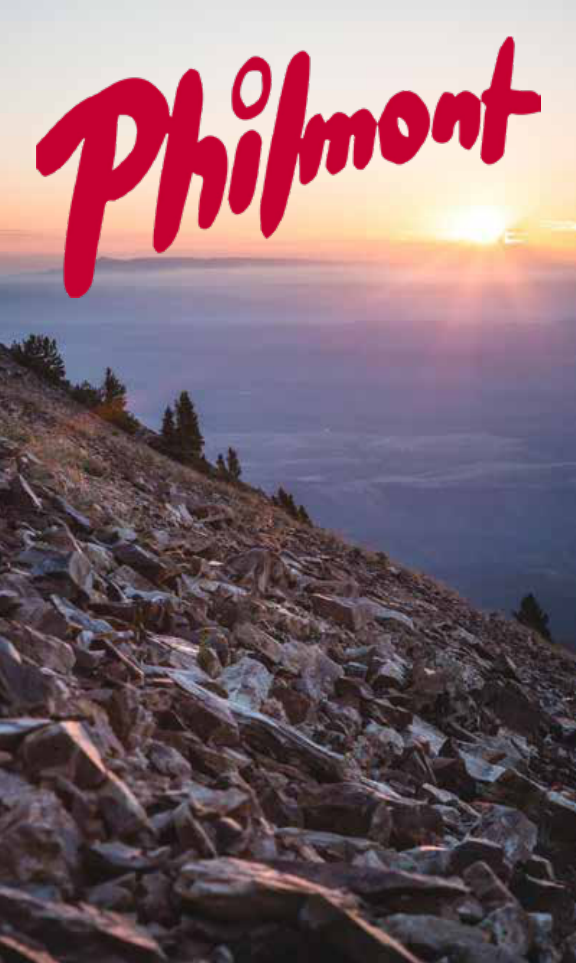
1
2024
GUIDEBOOK
TO ADVENTURE
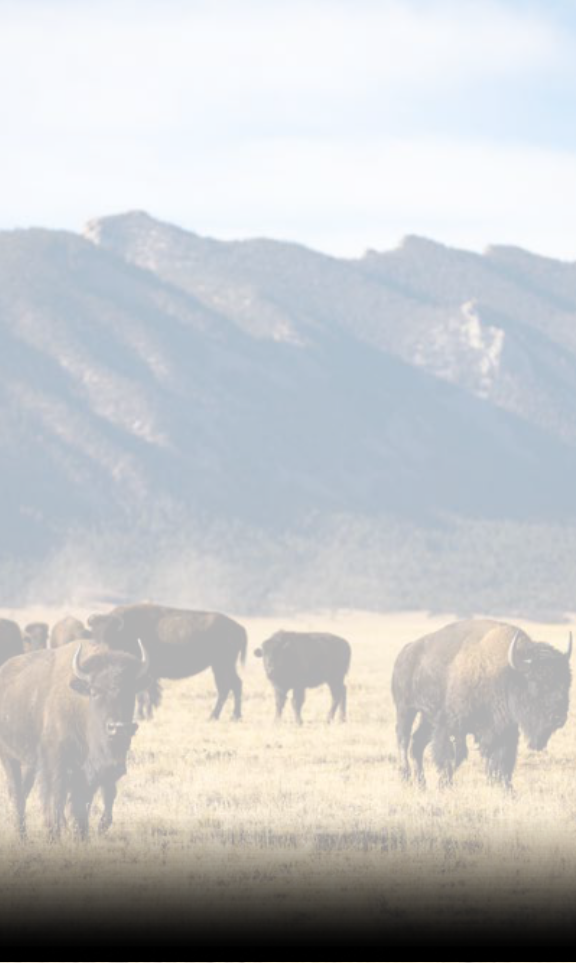
2
MISSION OF THE BOY SCOUTS OF AMERICA
e mission of the Boy Scouts of America is to prepare young people
to make ethical choices over their lifetimes by instilling in them the
values of the Scout Oath and Law.
A PICTURE OF THE FUTURE FOR SCOUTING’S SECOND
CENTURY
In Scouting’s second century, we are building the leaders of tomorrow.
Scouting’s dynamic and engaging journey beckons to America’s young
people. Our exciting programs and outdoor adventures inspire lives
of leadership, character, and service. Relevant and adaptive, we are a
trusted advocate for youth. Our adult volunteers and employees are
widely admired for their leadership excellence. True to our mission,
Scouting reects our nation in its ethnic diversity and shapes our
nation by developing responsible citizens.
VISION STATEMENT – PHILMONT SCOUT RANCH
It is the vision of Philmont Scout Ranch to continue to positively
impact the lives of young people and their Scouting leaders through
inspiring and eective delivery of the nest Scouting possible through
backcountry adventures and Training Center experiences.
It is our further vision that these experiences will be expanded to help
meet increasing demands. All future growth must be accomplished
with minimal ecological impact on resources to insure the
preservation of this great asset to serve future generations of Scouts.
PHILMONT SCOUT RANCH AND TRAINING CENTER
Delivering Wilderness and Learning Adventures at Last A Lifetime
PHILMONTSCOUTRANCH.ORG

3
TABLE OF CONTENTS
PHILMONT MAGIC .............................................................................. 4
AWARDS ............................................................................................. 6
PREPARING AND TRAINING ................................................................ 8
PRACTICE THE PATROL METHOD ...................................................... 10
HIKING AND CAMPING SKILLS .......................................................... 11
TIPS ON EQUIPMENT AND CLOTHING .............................................. 14
YOUR PERSONAL EQUIPMENT .......................................................... 20
EQUIPMENT PROVIDED BY CREW .................................................... 23
EQUIPMENT ISSUED BY PHILMONT .................................................. 25
THE ESSENTIALS FOR HIKING ............................................................ 25
ARRIVING AT PHILMONT .................................................................. 26
DAY ONE AT PHILMONT .................................................................... 27
DAY TWO AT PHILMONT ................................................................... 30
DAY THREE AT PHILMONT................................................................. 30
CAMPING AT PHILMONT .................................................................. 31
BEARMUDA TRIANGLE...................................................................... 34
PRESERVING THE PHILMONT WILDERNESS ...................................... 34
WILDERNESS PLEDGE ....................................................................... 35
REPORT ARTIFACTS ........................................................................... 36
SAFE AND HEALTHY CAMPING AND HIKING ..................................... 36
MEDICAL TREATMENT ...................................................................... 46
PROGRAM FEATURES........................................................................ 48
CAMPS AND PROGRAM FEATURES ................................................... 56
PHILMONT MUSEUMS...................................................................... 59
RELIGIOUS SERVICES ........................................................................ 60
FINAL PROCESSING AT CHQ .............................................................. 61
MORE PHILMONT ACTIVITIES ........................................................... 62
FALL AND WINTER PROGRAMS ........................................................ 64
STAFF OPPORTUNITIES ..................................................................... 65
PHILMONT TRAINING CENTER ......................................................... 66
MEANINGS AND PRONUNCIATIONS ................................................. 66
CAVALCADE GUIDEBOOK .................................................................. 67
NOTES ............................................................................................... 75
INDEX ................................................................................................ 77
Copyright © 2023
Philmont Scout Ranch, BSA
Cimarron, New Mexico

4
PHILMONT MAGIC
There is a magic spell at Philmont. Long ago, the Nave Americans felt it.
Later, Kit Carson, Lucien Maxwell, and other mountain men were capvated
by the land. A century later, the late Mr. Waite Phillips found himself under its
spell. His son, Ellio, and his cousins found it almost a necessity to return to
Philmont during their high school and college summer vacaons.
LOCATION and TERRAIN
Philmont is a Naonal High Adventure base, owned and operated by the
Boy Scouts of America. Philmont is large, comprising 140,711 acres or about
220 square miles of rugged mountain wilderness in the Sangre de Cristo
(Blood of Christ) range of the Rockies in northeastern New Mexico. Thirty-
four staed camps and seventy plus trail camps are operated by the ranch
(four camps are in the naonal forest). Philmont has high mountains which
dominate rough terrain with an elevaon ranging from 6,500 to 12,441 feet.
Philmont has established special use permits with several neighbors:
• US Forest Service – Valle Vidal Unit of the Carson Naonal Forest
• Barker Wildlife Management Area/New Mexico Game & Fish Dept.
• Colin Nebli, State Wildlife Area
• Chase Ranch
• CS Ranch
• UU Bar Ranch
Each neighbor has established specic use requirements. If your inerary
will pass through these lands, you will receive specic informaon during
your orientaon at Logiscs. Each requires use of Leave No Trace techniques.
These addional properes add about 110,000 acres for a total use area of
250,000 acres or 390 square miles.
HISTORY
Philmont has a unique history of ancestral Puebloans who chiseled wrings
into canyon walls…Spanish conquistadors who explored the Southwest long
before the rst colonists arrived on the Atlanc coast…the rugged breed of
mountain men like Kit Carson who blazed trails across this land…the great
land barons like Lucien Maxwell who built ranchos along the Santa Fe Trail,
and miners, loggers, homesteaders, and cowboys. All these people le their
mark on Philmont.
WILDLIFE
Philmont is abundant with wildlife—deer, elk, coyote, antelope, mountain
lion, bualo, beaver, wild turkey, bear and others. Its hills and canyons teem
with birds and its streams abound with sh. Its cool mountains harbor a
wilderness of botany—trees, shrubs, owers, and grasses.
BEAUTY
Philmont is rich in natural beauty, including the soaring Tooth of Time…
sunrise from loy Mount Phillips…the blue water of Cimarroncito Reservoir…
the panoramic sweep of the plains from Urraca Mesa…and sunlight ltering
through aspen along the rippling Rayado.

5
PROGRAM
Philmont provides an unforgeable adventure in sky-high backpacking
country along hundreds of miles of rugged, rocky trails. Program features
combine the best of the Old West. Horseback riding, burro packing, gold
panning, chuck wagon dinners, and living history provide excing challenges
each day. Rock climbing, mountain biking and shoong sports and more
make for an unbeatable recipe of fast-moving fun in the outdoors.
FELLOWSHIP
The opportunies for fellowship at Philmont are incredible from your own
crew to others from across the naon and the world.
STAFF
Philmont has the nest sta in America. Each sta member is carefully
selected and trained. Scoung spirit, knowledge of camping skills, keen
interest in their respecve program speciales, and a love for Philmont lead
the sta to deliver a rewarding and memorable experience.
When you come to Philmont, take advantage of these opportunies. It is
one of the best investments you will make—the returns are great!
WHO MAY PARTICIPATE?
In keeping with the policies of the Boy Scouts of America, rules for
parcipaon are the same for everyone without regard to race, color,
naonal origin, religion, age, sex, gender, sexual orientaon, marital or
familial status, genec informaon, cizenship status, protected acvity, or
any other status or classicaon protected by applicable federal, state, and/
or local laws.
Parcipants must be registered members of the BSA who will be 14 years
of age OR completed 8th grade and be at least 13 years of age prior to
parcipaon. DO NOT request or expect any excepons to this rule.
Some special programs allow for individual person registraon and
parcipaon. A crew must have a majority of its members under age 21.
Each parcipant must be capable of parcipang in a backpacking or
horseback riding trek. Please note that specic programs may have addional
requirements for parcipaon including but not limited to a 200 lb. weight
limit for Cavalcades and horse rides. Each parcipant must meet the health
requirements as outlined in the Annual Health and Medical Record.
Harassment
Philmont and the Boy Scouts of America prohibit language or behavior
that beliles or puts down members of any sex, unwelcome advances,
racial slurs, chassement for religious or other beliefs or any other acons
or comments that are derogatory of people. Parcipants who do not meet
these expectaons may be asked to leave.
PHOTO (TALENT) RELEASE INFORMATION
All Philmont Scout Ranch parcipants are informed that photographs, lm,
video tapes, electronic representaons and/or sound recordings may be

6
made during their visit to Philmont Scout Ranch. These images may be used
for training and promoon purposes for Philmont Scout Ranch and other
projects approved by the Boy Scouts of America.
Each parcipant, by compleng the Annual Health and Medical Record
“Part A: Informed Consent, Release Agreement, and Authorizaon”, will fulll
the necessary Photo (Talent) Release requirements for Philmont Scout Ranch.
(For complete statement please refer to Part A of the Annual Health and
Medical Record.)
AWARDS
Philmont Awards can only be earned! They are NOT available to the public.
Two unique awards are presented to parcipants who successfully meet the
challenge of a Philmont Expedion. They are:
THE ARROWHEAD AWARD
The Arrowhead Award is presented by your Adult Advisor when you have:
1. Aended the opening campre – “The Philmont Story”
2. Complete a Philmont-approved inerary (some excepons for medical
reasons) with your crew.
3. Completed a 3-hour conservaon project at one of several
designated sites on Philmont or neighboring properes (with the
help of Conservaon Department sta) and taken advantage of every
opportunity to learn about and protect our landscape while praccing
the art of backcountry living and travel that minimizes impact to soil,
water, plant life, and wildlife.
4. Fulll the personal commitment to the Wilderness Pledge.
5. LIVE THE SCOUT OATH AND LAW.
THE “We All Made It” PLAQUE
An award presented by Philmont to each crew that:
1. Demonstrated good camping pracces and Scoung spirit
2. Followed an approved inerary and camped only where scheduled
3. Fullled the commitment to the Wilderness Pledge
ADDITIONAL AWARDS THAT MAY BE EARNED DURING YOUR TREK
DUTY TO GOD
Under the guidance of a crew Chaplain’s Aide, each parcipant may fulll
the requirements for the Philmont “Duty To God” award. The requirements
include:
1. Aend a religious service while at Philmont
2. Parcipate in at least three daily devoonals with the crew
3. Lead Grace before a meal
Parcipants must obtain the Chaplain’s Aide signature to cerfy compleon
of the requirements. Scouts and Leaders may then purchase a “Duty To
God” patch from the Tooth of Time Traders. Proceeds support the Chaplain
Program at Philmont.

7
WILDERNESS PLEDGE ACHIEVEMENT AWARD
Each parcipant in the backcountry can earn the Wilderness Pledge
Achievement Award. This award has ve requirements. The Wilderness
Pledge Guia will help all members of the crew complete the requirements
and earn the award. A documentaon form will be provided at the
Wilderness Pledge Guia meeng held daily for trail-bound crews at the
Conservaon pavilion. The Wilderness Pledge Achievement Award patches
can be purchased by subming the form at the Tooth of Time Traders. Prots
from the purchase of this award will be used to expand the sustainable
iniaves of Philmont Scout Ranch.
REQUIREMENTS:
1. Take part in Ranger-led training for the Philmont Wilderness Pledge and
the Leave No Trace principles as they relate to your trek.
2. Follow all Philmont hiking and camping procedures on your trek.
3. Pracce all Philmont bear and wildlife procedures on your trek.
4. Take part in discussions focusing on the Seven Principles of Leave No
Trace, led by your Wilderness Pledge Guia; nd examples of the focus
principle during that day of the trek.
5. Complete your assigned Conservaon project while on your trek.
LA DOCENA ADVENTURADO AWARD
The “La Docena Adventurado” Award is presented to each crew that
parcipates with the maximum number of parcipants: Backpacking
Expedions = 12 parcipants. Cavalcade Expedions = 15 parcipants. A
ribbon is presented to the Advisor during the arrival registraon process.
TRIPLE CROWN AND GRAND SLAM
The Triple Crown Award is available to individuals who have parcipated in
a high adventure program at three of the four naonal bases (Philmont Scout
Ranch, Northern Tier, Florida Sea Base, and the Summit Bechtel Reserve).
The Grand Slam award can be earned by parcipang in a high adventure at
all four naonal bases. Logiscs will provide documentaon to each crew to
cerfy parcipaon in a Philmont Camping Program and to track parcipaon
at other bases. These awards are managed by the Sommers Alumni
Associaon. Complete details on qualifying programs and award ordering
informaon can be found at www.naonalhighadventureawards.com.
50-MILER AWARD
The 50-Miler Award, given by the Naonal Council, BSA, may be earned
by members of unit or council conngent groups. Requirements for this
award include hiking at least 50 miles and performing a 10-hour conservaon
project. A minimum of 3 hours will be earned at Philmont and the remaining
hours can be completed with your home unit or council. All 12-Day Philmont
ineraries meet the distance requirement, and several ineraries includes
enough conservaon program me to earn the award at Philmont. The award
may be ordered through your local council service center or from the Tooth
of Time Traders.

8
PREPARING AND TRAINING
A Philmont Expedion begins at home. Months before arriving at Philmont,
you should begin planning and training. Several details must be completed
when your Advisor receives the “Advisor’s Packet”, including:
Annual Health and Medical Record/Physical Evaluaon
You must have a current Annual Health and Medical Record completed
before deparng for Philmont. Physical evaluaons by a physician are valid
through the end of the 12th month from the date it was administered by
your medical provider. You are required to have had a tetanus shot or booster
within 10 years. A current measles vaccinaon is highly recommended.
Philmont is required to follow COVID-19 protocols set forth by the BSA, the
CDC, the State of New Mexico, and others. Typically, these are not oponal
and they change frequently. Please monitor the current Philmont migaon
eorts at www.PhilmontScoutRanch.org/covid-19-migaon/ to be sure
your crew complies with current protocols.
Advisors should collect the Annual Health and Medical Record form well
in advance of deparng on your Philmont trip to ensure that parcipants
meet all Philmont requirements and upload them into the crew roster in the
Philmont Gateway. Parcipants MUST NOT exceed the maximum acceptance
on the height/weight chart at the me of their arrival at Philmont. A fee
will be charged for medical exams and vaccinaons for parcipants who
arrive at Philmont without having the required examinaon. Parcipants
who do not wish to have vaccinaons or specic medical treatment due to
personal or religious reasons should ll out the vaccinaon exempon form
and aach it to the Annual Health and Medical Record.
Due to Philmont’s remote locaon it is imperave that parcipants have
any emergency medicaon they may need and know how to administer it.
This includes rescue inhalers and EpiPens. Emergency medicaons will be
checked during the medical recheck process to ensure that the medicaons
are in date and there is sucient quanty for your trip. All medicaons must
be in original containers.
A copy of the Annual Health and Medical Record, High Adventure Risk
Advisory to Health-Care Providers and Parents, Vaccinaon Exempon form,
and Frequently Asked Quesons can be found at hp://www.scoung.org/
HealthandSafety/ahmr.aspx.
Height/Weight Restricons: If you exceed the maximum weight for height
and your planned high-adventure acvity will take you more than 30 minutes
away from an emergency vehicle/accessible roadway, you will not be allowed
to parcipate. Review Annual Health and Medical Record for addional
informaon regarding the height/weight restricons.

9
Height/Weight Chart
Height (inches) Max Weight Height (inches) Max Weight
60 166 70 226
61 172 71 233
62 178 72 239
63 183 73 246
64 189 74 252
65 195 75 260
66 201 76 267
67 207 77 274
68 214 78 281
69 220 79 & over 295
Physical Training
All Philmont acvies are physically demanding. Steep, rocky trails with
1,000-foot climbs are typical. Also, there is 20 to 35 percent less oxygen at
Philmont elevaons than at sea level. Remember, you will be carrying a pack
weighing up to 1/3 of your body weight. Breathing will be labored, especially
at the start of your trek.
A program of regular aerobic exercise that begins six months or more
before you come to Philmont is highly recommended. Exercise for at least
30 minutes 3 to 4 mes a week at an intensity that boosts your heart rate
about 75% of your maximum. An average maximum heart rate is 220 minus
your age. If you are older than 40, or have not been very acve, consult your
doctor before beginning an exercise program.
Jogging, hiking uphill or up long ights of stairs, and hiking with a full pack
(the weight you expect to carry at Philmont) are excellent preparaon. Other
aerobic exercises such as swimming and bicycling can be used to supplement
your training. Start slowly and gradually increase the duraon of your
exercise.
Exercise individually or with other members of your crew. Set aside regular
periods of me to do it. Plan to be in top physical shape when you arrive
at Philmont. You will enjoy your experience more and be less likely to have
medical problems. This is a great opportunity to break in boots and other
gear that you will be using on your Philmont trek.
Philmont suggests that you maintain a tness log of all physical acvies.
This will help you stay focused and provide a way to monitor your progress.
By comparing informaon from your log with other members of the crew, you
will be able to encourage each other to physically prepare for the adventure.

10
Stretching
Hiking at Philmont can be strenuous. Proper stretching before and aer a
hike can make your hike more enjoyable and prevent injuries for young & old.
Your Philmont Inerary
An important step in preparing for Philmont is for your crew to select your
inerary. An inerary is a hiking plan that describes camps and program
features for each day on the trail. Crews will select and conrm their inerary
online. Instrucon for this process will be through the Camping Gateway.
Online selecon and conrmaon will begin in January. Ineraries will
post to www.PhilmontScoutRanch.org in December in a document labeled
Inerary Guidebook.
Know Your Expedion Number
Your Expedion Number is assigned by Philmont. It is determined by
your expected arrival date. For example, if your crew is to arrive July 14,
your Expedion Number will begin with 714, which signies 7th month and
14th day. Since many crews arrive each day, leers disnguish dierent
crews (for example, 714-A or B, C, etc.) If your reservaon consists of
several crews, numbers are used to designate each one. Thus, your crew’s
complete Expedion Number may be 714-A-02. If you don’t know your crew’s
Expedion Number, ask your Advisor.
MY EXPEDITION NUMBER:
Mail and Philmont Address
Your complete Expedion Number is essenal for mail delivery at Philmont.
Incoming mail may be picked up only by your Expedion Advisor or Crew
Leader at the Philmont Mail Room when your crew arrives at Philmont and
when you return to Camping Headquarters from the trail. You may send mail
from any staed camp.
Philmont address:
Your Name, Expedion Number
47 Caballo Rd
Cimarron, NM 87714
Emergency Telephone Number at Philmont: (575) 376-2281
Telephone calls to you are restricted to EXTREME EMERGENCIES ONLY.
Since Philmont comprises a use area of 390 square miles of rugged mountain
wilderness, it may require several hours to transport you from some camps
to return an emergency phone call. In those cases, it will speed contact when
the caller has your full name and Expedion Number.
PRACTICE THE PATROL METHOD WITH YOUR CREW
Your Philmont trek will provide you an opportunity to pracce the many
skills that you have learned while parcipang in your Scouts BSA Troop,
Venturing Crew, Sea Scout Ship or Explorer Post. This experience brings in

11
focus the importance of the Patrol Method. Each crew is a small group of
parcipants much like a patrol. The crew members are close in age and
experience level and working together helps each other develop a sense of
pride and identy. The parcipants elect their Crew Leader, divide up the
jobs to be done, and share in the sasfacon of accepng and fullling group
responsibilies.
Three members of the crew will have a leadership responsibility that lasts
throughout the trek: Crew Leader, Chaplain Aide and Wilderness Pledge
Guia. In addion, all members of the crew will serve in some leadership
role each day, either as the primary or the assistant. Examples of rotated
leadership responsibilies for the crew include: navigator, cook, dishwasher,
bear bags manager, water gatherer, and re guard(when res are permied).
The camping methods pracced at Philmont Scout Ranch support the Patrol
Method concept. With 20,000+ parcipants each summer, Philmont has
determined that these methods and procedures work best. Please plan to
follow them. Two examples of this include cooking and washing dishes as
one group. Members of the crew will rotate during the trek and fulll these
important responsibilies. This allows crew members to pracce servant
leadership as they take on a task that will support the enre crew.
Some of the current wilderness camping methods focus on the individual.
In support of the Boy Scouts of America, Philmont will focus on the crew and
the accomplishments that they can achieve by working together as a team,
the Patrol Method.
The Ranger assigned to the crew will help the enre crew achieve the most
from their Philmont Adventure!
HIKING AND CAMPING SKILLS
Time and eort spent in sharpening your hiking and camping skills will
allow you more me to enjoy the natural beaues and program features of
Philmont. The best way to pracce and develop these skills is to parcipate in
several oungs with your crew. Use the Backpacking Merit Badge pamphlet
or the BSA Field Book to guide your preparaon and training. Philmont
suggests two shakedown weekends. Step by step guides for shakedown
weekends are available at www.PhilmontScoutRanch.org/shakedown. Be
sure to also tune in to the monthly “Philmont Preparedness Seminars” for a
variety of useful planning ps and updates to programs and procedures. See
the website for dates and more informaon.
Gathering Your Equipment
Backpacking requires proper equipment just as any outdoor sport. Without
suitable equipment you will face unnecessary hardships. Take only what you
need. Aer several overnight preparaon hikes you should be able to conduct
your own shakedown to eliminate items that you don’t need. Remember, the
key to successful backpacking is to go lightly. Check your equipment against
the recommended list. This is the maximum. All backpackers can reduce this
list and sll be comfortable, clean and safe. All equipment must be able to

12
hold up to the rigors of a 12-day backpacking adventure. Learn techniques
for taking care of your equipment. For more informaon about gear check
out www.PhilmontScoutRanch.org and www.ToothofTimeTraders.com. Be
sure to check out the video links on both sites for helpful informaon about
equipment.
Organizing Your Crew
A well-organized crew gets its chores accomplished quickly and has more
me to enjoy Philmont. Your crew should be organized before you arrive at
Philmont. If your crew is a chartered unit, this should be easy. If your crew is
a provisional council group, it is especially important to be organized.
Elect a Crew Leader several months prior to coming to Philmont. Your
Crew Leader is responsible for organizing the crew, assigning dues, making
decisions and recognizing the capabilies and limitaons of each member.
They lead by example and discuss ideas and alternaves with the enre crew
to arrive at a consensus before taking acon. This responsibility requires
someone with leadership ability who is respected by everyone.
Each crew should also select a Chaplain Aide, perhaps a member of the
crew who has received a religious award in Scoung. The Chaplain Aide is
responsible for assisng the crew in meeng their responsibility to the 12th
point of the Scout Law, as well as working with the Crew Leader and Advisor
to ensure good morale and the smooth operaon of the crew.
Finally, every crew will select a Wilderness Pledge Guia (Guide). This
individual will help the crew understand the principles of the Philmont
Wilderness Pledge and Leave No Trace. This person will help the crew focus
on camping pracces that will adhere to the wilderness ethics outlined in the
two approaches. With more than 20,000 parcipants camping each summer
at Philmont, it is important that each person do their share to ensure that we
protect Philmont and our neighbor’s properes for generaons to come.
A Ranger will be assigned to serve as a teacher and resource for your crew.
This person will coach the Crew Leader and the rest of the crew. The Ranger
will work with your crew for the rst three days at the Ranch.
Your Adult Advisor counsels and advises your Crew Leader and crew. The
Adult Advisor assists if discipline is required. With the assistance of the
Ranger, your Adult Advisor is responsible for ensuring the safety and well-
being of each crew member. One role of the Adult Advisor is to let the Crew
Leader lead the crew.
The enre crew and especially the Crew Leader and Adult Advisor need to
eecvely relate to everyone in the crew. Crew congeniality is important to
crew harmony. Make it a point to say something posive to each member of
your crew at least once a day. Tell each person what they did well.
Good communicaon is crucial to your crew’s success. Make sure that
everyone parcipates in determining the objecves for the crew each day.
Aer the evening meal is an ideal me to accomplish this.
Remember, when you are hot and red, hungry and irritable, so is your
crew. Everyone is expected to control personal behavior, especially when
the going is tough. The Crew Leader needs to connually monitor the crew’s

13
dynamics.
A daily duty roster will help to organize your crew. Each crew member is
assigned a responsibility for each day. Jobs should be rotated so that at least
one experienced and one new crew member work together. Every job should
be clearly dened. Your crew should have a list of all tasks for each job so that
everyone knows what is expected. A form is provided to your Crew Leader
upon arrival at Philmont.
Before deparng for Philmont, your crew should select one member to
serve as its reporter. The reporter should work with their local news media,
council, troop, and crew members to share stories and photos on social
media and through news outlets. Plan a presentaon for your unit back
home to share at the next meeng. These methods will also help encourage
younger Scouts to connue their advancements or prepare for their own
Philmont adventure someday. Helpful examples and a press release template
may be found at www.PhilmontScoutRanch.org/PressRelease.
Backpacking – Seng the Pace
If you pack properly, backpacking will be much easier. Pracce hikes will
help. Your pace is the key to good backpacking. It should be slow enough to
allow everyone to keep together without bunching up. Single le is the rule. A
steady, constant pace is best. When climbing steep grades, your pace should
be slower, but sll constant. Always keep your crew together. A medical
emergency is the only reason to separate your crew.
Rest stops should be short and frequent. Any member of the crew can call
for a rest stop at any me. Sixty second rests will let you catch your breath.
Learn to rest without removing your pack; if you bend over and loosen your
hip strap, you can remove the weight from your shoulders. Deep breathing
works best for high altude backpacking at Philmont.
Conserving Energy
Use as many energy-saving techniques as possible; nibble snacks and drink
plenty of liquids to sustain you throughout the day. On steep ascents, use
the “rest step”. Place the sole and heel of one foot at on the ground. Lean
forward and momentarily lock your knee. For an instant the bones of your leg
and hips will support your weight, allowing the muscles of your thigh and calf
to rest. Repeat this sequence with your other foot. Your pace will be slow, but
you will save energy and make steady progress up the mountainside.
Use “rhythmic breathing” in conjuncon with the rest step. To breathe
rhythmically, synchronize your breaths with your steps. On moderate slopes,
take one breath per step; on steep slopes, take two or three breaths per step.

14
TIPS ON EQUIPMENT AND CLOTHING
Tents
Due to the terrain, wildlife, and sudden change in weather condions, tents
are a required shelter for a Philmont trek and therefore all crew members
are required to sleep in a tent. Bivy sacks and hammocks are not acceptable.
Every member of your crew should be able to set up, take down, and fold
the tent. Philmont uses two-person, free standing backpacking tents (foot
print - 4’6” x 7’4”) called “The Thunder Ridge”. The tent is durable, requires
8 stakes (not provided), weighs 5 lb. 4 oz., and is available during your trek at
no charge.
Space for tents in most campsites is limited. Use of two-person tents
minimizes the footprint and avoids encroaching on the “Bearmuda” Triangle
(see pg. 34). Two one-person tents take up nearly twice as much space as one
2-person tent. A 5’ x 7’ waterproof ground cloth must be used under each
tent; these are not provided.
A tent washing staon is located at Ouing Services for the washing of
tents and dining ys. Crews are asked to help with this process as they return
the equipment they have checked out. If you choose to provide your own
tent it must be a two-person tent and free of all food smells. If you think your
tent may have been compromised by food smells, please use a Philmont tent.
Philmont will allow a single person or three person tent in the event of an
odd numbered crew, gender numbers and for youth protecon compliance.
Youth sharing tents must be no more than 2 years apart. Keep in mind, due
to the Youth Protecon Policy, parents cannot tent with their children.
Please make tenng assignments accordingly.
Packs
A sturdy, well-ed pack is essenal for backpacking at Philmont. A pack
with a 65-85 liter carrying capacity will t personal gear, crew gear, food, and
water. There are many choices of packs and having a pack ed to your body
with appropriate sizing of shoulder straps and hip belt is essenal.
Whether you choose an external or internal frame, there is a method for
packing that is basic to all. Nearly all backpackers stow their sleeping bag in
the boom of the pack. This is also a good place for other items you won’t
need unl you make camp at night: sleepwear, camp pillow, sleeping pad.
Internal frame packs should have heaviest items placed on top of the sleeping
bag and centered in your pack. For external frames, the heaviest items should
be placed at the top and against the frame of the pack near your shoulders.
All items in your pack should be neatly organized and packed in waterproof
bags or stu sacks. Your map, compass, sunscreen, rain gear, camera, and rst
aid kit should be readily accessible. A waterproof rain cover is recommended
to keep your pack dry at night and while hiking in the rain.
Check your pack weight. 20-25 pounds without food and water is preferred.
Comfortable pack weights vary considerably with physical condion, age, and
experience. Your training hikes will help you nd out what is best for you. As
a regular rule of thumb, a fully loaded pack should not exceed 25-30% of
your body weight.

15
With your pack fully loaded, pracce pung it on your back by rst
balancing it on one knee with the pack straps facing you, slip your nearest
arm through the appropriate strap and smoothly swing the pack behind you,
reaching down and back to slip your free arm through the second strap and
jiggle your pack into a comfortable posion.
If you are unsure of your pack’s t or queson the durability for Philmont’s
trails, you can rent either an internal pack at Philmont for a fee of $30 for
the duraon of the trek. This fee includes the pack cover. Our knowledgeable
sta will t you in the appropriate pack at Philmont and pre-reservaons
are not necessary. Review the chart below for informaon on rental pack
types and sizes or call Camping Headquarters if you have further quesons
regarding the pack rental program.
BRAND MODEL VOLUME SIZE
Osprey
Kiva 70 + 5 L
Escalante 75 + 10 L S/M, L/XL
Map & Compass
Most trails on Philmont are marked at intersecons, but they are not so
well marked that you can put your map and compass away and forget them.
Philmont trail signs oen point to geographic features such as mountains,
canyons, and streams. Hiking on neighboring property requires good map and
compass skills as there are not trail signs in these areas. Plan to navigate with
a seconal map (available from the Tooth of Time Traders). Each crew should
have at least two seconal maps that correspond to their inerary.
Learn and pracce your map and compass skills. You will be able to know
where you are at all mes and where you are headed. Look at a map. Do
you know what the symbols mean? What do the colors—black, brown,
blue, green, white, and red—stand for? Brown contour lines are parcularly
signicant. The contour lines on Philmont’s seconal maps represent a
50-foot climb; the more lines you cross on a route, the tougher the climb or
the descent. You must be able to orient a map, understand symbols and
scale (1: 31,680 for Philmont seconal maps). The BSA “Fieldbook” and the
“Orienteering Merit Badge Pamphlet” are excellent resources.
Philmont has introduced trail signs that indicate the UTM coordinates of the
specic locaon. You will be trained by your Ranger in understanding how to
nd a UTM coordinate on the map.
Personal GPS and Emergency Locator Devices
If a member of your crew brings a personal GPS or Emergency Locator
Device, they should know how to use and program them, and be very familiar
with them prior to coming to Philmont. Philmont’s seconal maps, available
in advance from the Tooth of Time Traders, may be used to determine
the UTM coordinates and elevaons for camps and other locaons; these
locaons should be loaded into the device(s) prior to coming to Philmont. To
be correctly synchronized with these maps, GPS devices should be set for:

16
• Projecon: UTM Zone 13
• Horizontal Datum: NAD83
• Ellipsoid: GRS80
Emergency Locator Devices have many capabilies for sending messages.
However, Philmont does not have the capabilies to receive messages from
these devices. Your Ranger will teach you the emergency procedures used at
Philmont.
Backpacking Stoves and Fuel
All crews must bring backpacking stoves as they are required to cook
meals. Backpacking stoves must be used with adult supervision and should
never be used in or near tents because of re danger. Boles designed to
carry fuel should be used. Isobutane/propane fuel stoves are also acceptable.
Tooth of Time Traders carries fuel boles and several brands of isobutane/
propane canisters. Ouing Services carries white gas. Fuel is also available
on the trail at commissary camps where you pick up food. Check the O-rings
on your fuel boles to prevent leaks.
If using isobutane/propane fuel stoves, be sure that they are designed to
hold an 8-quart pot. The safest stoves on the market that accomplish this
requirement have a fuel line that separates the canister from the stove. This
reduces the reected heat from impacng the canister and permits the user
the ability to adjust the temperature safely.
Smaller one or two-person stoves have become available and popular,
however they do not meet the requirements for crew cooking (Patrol
Method) at Philmont Scout Ranch. A small stove might be a good addion
for quick heang of water for coee, tea or cocoa while on the trail. Bio-fuel
stoves are generally small, although, due to the desert southwest climate and
frequent re restricons, these are not permied for use at Philmont.
If using commercial transportaon, stoves and fuel boles can be shipped
to Philmont and will be held at the Base Camp Mail Room for your arrival.
(Allow two weeks.) A minimum of two stoves for your crew is required.
Learn and follow these safety ps:
1. Keep fuel containers away from hot stoves and res. Never use fuel to
start a campre.
2. Let hot stoves cool before changing cylinders or relling.
3. Never fuel or operate a stove in a tent, building, or dining y.
4. Place stove on a level, secure surface before operang.
5. When lighng a stove, keep fuel boles and extra canisters well away,
do not hover over stove, open fuel valve slowly, and light carefully. The
pressure dierenal is greater at Philmont’s high altudes.
6. Rell stoves away from open ames. Recap all containers before
lighng stoves.
7. Do not overload the stove.
8. Do not leave a lighted stove unaended.
9. Perform stove maintenance regularly, at home and at Philmont.
10. Store fuel in proper containers.

17
Be Prepared for Extremes of Weather
Be prepared for extreme weather variaons at Philmont. Aernoon
temperatures in low valleys can be hot (100 degrees or more), and night
temperatures high in the mountains may drop to freezing.
Philmont can be extremely dry and then a sudden downpour will soak
everything. Periods of rain lasng several days may occur. Fortunately, New
Mexico’s low humidity allows wet clothing and gear to dry quickly aer the
rain stops. Rain occurs most frequently in the aernoon and may last an hour,
all night, or several days. Small hail or sleet oen accompanies rain. Mountain
weather is ckle—anything can happen and oen does. Snow is possible,
even during the summer. Weather condions vary from one area of the ranch
to another depending upon elevaon, terrain and irregular weather paerns.
You should be prepared for all of the above weather condions. Please
consult with the Naonal Weather Service for current weather condions
and informaon on past weather paerns.
Clothing
During cold periods, it is especially important to stay dry since wet clothing
loses much of its insulang value (90 percent or more). Several light layers
of clothing are beer than one heavy layer since air trapped between
layers of clothing provides a high degree of insulaon. As the atmosphere
warms you can remove one layer of clothing at a me for proper body heat
management. Keep in mind that wool and synthecs insulate when wet.
Lightweight merino wool base layers tend to be naturally odor resistant but
can be expensive. Down or coon layers such as sweatshirts and sweatpants
drain body heat when wet, and dry very slowly.
While the ocial BSA uniform is highly recommended for use when
traveling to and from Philmont and wearing at base camp, you may choose
to wear other clothing on the trail. Long pants are recommended for cold
nights and are required for horseback riding, conservaon projects, and pole
climbing at logging camps. Shorts and short-sleeved shirts will generally be
sucient during the day; however, a sweater or eece jacket is necessary for
cold mornings and evenings and possible downpours of rain or hail.
To be comfortable and dry during rain, a good quality rain suit is essenal.
Inexpensive vinyl rain suits or ponchos will not hold up under extended use. A
poncho is not adequate. You need to have a durable rain jacket and pants.

18
Glass and Aerosol Containers
Glass containers or aerosol cans should not be carried on the trail. Glass
breaks easily and aerosol cans are bulky and may erupt in packs.
Money
Campers spend an average of $100 at Philmont’s trading posts. Backcountry
trading posts are located at: Ponil, Apache Springs, Baldy Town and Phillips
Juncon. Cannas are located at Abreu and Ponil and oer root beer and a
variety of snacks. If major items such as jackets, leather belts, and buckles
are desired, more money will be needed.
$20 - $50 should cover most expenses on the trail. Money taken to the
backcountry should be in small bills. Trail Charges can be made for larger
purchases and emergency needs in the backcountry. These expenses may
include:
• Shoong Programs: Three (3) shots are free at Philmont’s .30-06,
shotgun, and muzzle loading programs, and twelve (12) shots at the
Cowboy Acon Shoong program. Depending on availability, addional
rounds may be purchased.
• Healthy trail snacks, root beer, repair items and replacement
equipment, etc.
• Fuel for stoves (available at all trading posts and commissaries)
Fishing Program & Fishing Licenses
Catch and release shing programs are available at Fish Camp and Phillips
Juncon as well as permied in most of Philmont waters. Fishing is NOT
permied in the Middle, North or South Ponil Creeks, and at Cimarroncita.
Fishing ies are available for purchase at the Tooth of Time Traders. Loaner
poles are available at Fish Camp for the Fly Fishing program oered there.
Fishing licenses for parcipants under 18 years of age may be purchased
as the Tooth of Time Traders OR at backcountry camps that oer shing
programs. The cost of a ten-day license is $2.00.
All parcipants 18 years of age or older will be required to purchase a
shing license from New Mexico Department of Game and Fish through
a mandatory web-based sales system. A special online kiosk at the Tooth
of Time Traders will be available to help parcipants obtain their licenses.
Fishing licenses for parcipants 18 years of age and older will NOT be
available for purchase in the backcountry.
Fees for nonresident shers licenses will be as follows:
• One day = $12
• Five days = $24
• Annual = $56
If you are purchasing a one-day or ve-day license, we recommend that you
do so at the Tooth of Time Traders aer you arrive at Philmont so we may
help you align the actual shing days with your inerary and insure you have
the required validaons before purchasing a non-refundable license. The
New Mexico Department of Game and Fish requires each applicant to create
an online prole with a username and password before they can purchase a

19
license. The system will assign the applicant a unique Customer Idencaon
Number (CIN). You can speed up the process to obtain your license at
Philmont by obtaining this informaon before you leave home. Each person
in the crew planning to purchase a license should obtain their own Customer
Idencaon Number. www.wildlife.state.nm.us/shing/licenses-permits/
Sleeping Bags
Your sleeping bag should be warm (suitable for temperatures down to 20
degrees), but less than 5 pounds. You can increase the R value (temperature
rang) of your bag by using an insulated pad under your bag, wearing long
underwear and a hat, or using a eece or synthec sleeping bag liner. When
your sleeping bag is packed it should be no more than 20 inches long and 10
inches in diameter, and it should weigh 5 pounds or less. Use a waterproof
stu sack to store your sleeping bag or if you do not have one, line the stu
sack with a heavy-duty (4 to 6 mil) plasc bag safely secured. This will keep
your sleeping bag dry even in wet weather.
Boots and Shoes
High quality hiking boots that are broken-in are required for the trails at
Philmont. Your trek will cover uneven rocky surfaces and steep trails. Hiking
boots that t properly and are broken-in will prevent injury. Trail runners are
permied for hiking at Philmont and can reduce hiking weight, but they do
not provide ankle support that tradional hiking boots provide and should
only be used by those who have experience wearing them while carrying
heavy loads through rocky terrain. Footwear for horse rides must be sturdy,
close toed, close heeled shoes (no Crocs or sandals). You will also need
a pair of sturdy lightweight, closed toe shoes for use around camp and
occasionally when hiking without your pack. These will also be used when
rock climbing, biking, and potenally crossing streams. Sandals are not
recommended but can be used in campsites only. For more ps on choosing
boots and footwear visit www.ToothOfTimeTraders.com.
Socks
The socks you wear on the trails will have a signicant eect on your
experience. Just like boots, choose your socks carefully. Socks for
backpacking are designed to provide cushioning and abrasion resistance
as well as warmth. You should choose socks made of synthec materials or
wool. Socks can add volume to your footwear. When you are ed for your
boots, make sure you wear the socks you have chosen to wear on your trek.
There are 3 categories of socks:
• Liners - These are thin wicking socks that you wear next to your skin.
They keep your feet dry and comfortable and are meant to be worn
underneath other socks.
• Lightweight Hiking Socks - These socks stress wicking performance over
warmth. They are relavely thin so that you stay comfortable on warm
weather trips. They can be worn with or without sock liners.
• Midweight Hiking Socks - These socks are thicker and warmer than the
lightweight hiking socks. Many have extra padding built into the heel

20
and the ball of the foot for maximum comfort. They can be worn with
or without liners.
Crew Photographer
Although oponal, a camera will record memorable experiences and
beauful scenes. Some crews select a crew photographer who takes shots for
everyone. Digital photography can dramacally change your picture taking
and sharing ability and a dedicated camera can oen yield beer results than
a cell phone camera. Cold weather or prolonged use can deplete camera
baeries. Be sure to bring replacement baeries or a small lightweight solar
charger.
YOUR PERSONAL EQUIPMENT
If you have any quesons regarding any of these items on the Equipment
List, please contact Philmont’s Tooth of Time Traders at 575-376-1145 or
ToothOfTimeTraders@scoung.org.
BACKPACKING GEAR
EQUIPMENT QTY COMMENTS CODE CHECK
Backpack 1 Large enough to be able to carry
all personal gear and your share
of crew gear. 65 to 75 L capacity
recommended. Rental available with
pack cover for $30
T
Pack Cover 1 Waterproof, durable cover that ts
over full pack
T, A
Sleeping Bag 1 Recomended comfort rang of 20
degrees and weight less than 4 lbs.
T
Waterproof stu
sack
1 For sleeping bag. Alternavely, use
compression sack lined with plasc
bag.
T
Sleeping pad 1 For padding and insulaon from
ground
T
Headlamp or
Flashlight
1 Durable and lightweight. Bring extra
baeries.
T, E
OPTIONAL ITEMS
Trekking poles Use rubber ps to prevent soil
erosion
Pillow Small, packable T
FOOD AND WATER
EQUIPMENT QTY COMMENTS CODE CHECK
Bowl 1 Deep bowl of lightweight material T
Utensils 1 Only a spoon or spork are
recommended
T
Water Boles &
Reservoir
4+ L At least 4L personal capacity in any
combinaon of bole or reservoir
T, A,
BB, E

21
Extra Water
Capacity (for dry
camps)
2 Recommend each person have 2
liters of extra water capacity in
collapsible water boles for dry
camps
T, E
OPTIONAL
Mug/Cup 1 12-20 oz. measuring style
recommended
T, O
CLOTHING & FOOTWEAR
EQUIPMENT QTY COMMENTS CODE CHECK
Underwear 3-4
pr
Moisture-wicking T
Sports Bra 2 Synthec, Moisture-wicking T
T-shirt 2 Moisture-wicking, avoid coon T
Long sleeve shirt 1 Moisture-wicking, avoid coon T
Pants/Shorts 2 Quick drying. Pants are needed
for certain programs including
conservaon
T
Lightweight
eece
1 Lightest and warmest available.
Wool sweater or eece pullover
T
Boots 1 pr Sturdy, supporve, broken in.
Durable and t comfortably. Trail
runners are accepted but ankle
supporng boots are highly
recommended.
T
Socks 3-4
pr
Wool or synthec, not coon.
Liners are oponal and help prevent
friciton and wicks sweat from feet.
T
Camp/Stream
shoes
1 pr Used in camp, stream crossing, some
backcountry programs
Sleep clothes 1 set Only worn in sleeping bag.
Lightweight t-shirt and gym shorts
recommended.
OPTIONAL
Long underwear 1 Mid-weight synthec top and/or
booms. Used for cold mornings or
nights.
RAIN & COLD WEATHER
EQUIPMENT QTY COMMENTS CODE CHECK
Rain jacket 1 Durable rain gear is highly
recommended
T
Rain pants 1 In heavy rain, rain pants are vital for
warmth
T

22
Gloves 1 pr Recommended for cold/summit days T
Warm hat 1 For sleeping, cold/summit days T
OPTIONAL
Insulated jacket 1 Packable down or synthec puy or
eece. Expect lows in 30s at higher
elevaons.
T
HEALTH & HYGIENE
EQUIPMENT QTY COMMENTS CODE CHECK
Toothbrush and
toothpaste
1 Larger toothpaste tubes may be
considered crew gear
T, BB
Menstrual
products
Tampons/Pads strongly
recommended for those that need
them. See feminine hygiene
T
Prescripon
medicaons
In-date (not expired). Enough for
enre trek.
BB
Camp towel 1 Small, quick drying T
OPTIONAL
Foot powder May be kept as crew gear. Soothes
red feet, absorbs moisture and
reduces chance of blisters.
BB
SUN PROTECTION
EQUIPMENT QTY COMMENTS CODE CHECK
Hat 1 Wide brim or baseball, protects ears
and face from sun
T
Sunglasses 1 Protect your eyes and reduce eye
strain.
Lip balm 1 Moisturizing with SPF 25 or more BB
MISCELLANEOUS ITEMS
EQUIPMENT QTY COMMENTS CODE CHECK
Diy bags/
Sealable plasc
bags
6-10 Useful for packing and keeping
clothes dry, cleaning laundry, and
pack organizaon
T
Whistle 1 For emergency use/signaling T, E, A
OPTIONAL
Daypack 1 For use on summit days and side
hikes.
T
Bandana/tubular
headgear
2 Serves as a wash cloth, hot pot
holder, and a variety of other uses.
T, BB
Lashing straps 2 Hold sleeping bag and gear on pack T

23
Pocket knife A few per crew is sucient
Money $20-
$50
Small bills. Backcountry trading posts
have many items.
BB
Watch 1 Several recommended throughout
crew members.
T, O, E
Camera 1 Baeries & memory card. T, BB, S
Fishing
Equipment
1 Some ineraries have shing
opportunies. Including NM State
Fishing License.
T, O
Postcards 1+ Pre-stamped. Mailing available on
trek
T, O
Notepad & Pen 1 For journals or emergency messages.
The Philmont Passport is great for
journaling.
T, BB,
O
Cards or games For entertainment
CODE: (T)=Available at Philmont’s Tooth of Time Traders; (A)=Easily accessible in
pack or carried on person; (BB)=Packed in bear bag at night; (S)=Share with a buddy;
(O)=Oponal
, (E)=Philmont Essenals (see pg. 26)
ITEMS PROHIBITED:
• Deodorant
• Radios/Bluetooth Speakers/Video Game Devices
• Hammocks
• Turkey Bags
• Bear Bag Pulley Systems, Bear Spray, Bear Horns
• Drones
Labels
Be sure to label all of your clothing and equipment with your name and
Expedion Number so you can readily idenfy what is yours and so any of
your belongings sent to Lost and Found can be returned.
EQUIPMENT PROVIDED BY CREW
Necessary items for each crew to bring or purchase upon arrival.
EQUIPMENT QTY COMMENTS CODE CHECK
Sewing Kit 1 Heavy thread & needle used to
repair pack, tents, clothing, etc.
T
Tent Stakes/
per person
5 Philmont Thunder Ridge tents - 8
Philmont dining y - 8
T
Backpacking
Stove
2 White Gas or Isobutane fuels.
Stove needs a widebase low to
the ground. Highly recommend
Isobutane stoves being able to burn
with canister upside down and
rightside up.
T

24
Stove Fuel 2 White Gas recommend 2 - 20oz
boles. Isobutane recommend 3 -
8oz/220g canisiters. Can resupply
both white gas and isobutane at
commisary camps.
T
First Aid Kit 1 Sucient for crew and easily
accessible.
T, BB,
A, E
Duct Tape 1 Small amount needed for trail
repairs.
T, BB
Waterproof
Ground Cloth
1/
tent
1 per tent. 5’ x 7’ is suitable for
Philmont tents.
T
Nylon Cord 3 50’ x 1/8” for dining y, clothesline,
repairing items or tying items to
pack.
T
Sunscreen 2 - 3 6 oz tubes w/SPF 25 or higher. T,
BB, E
Insect Repellent 2 Small boles, no aerosol spray cans. T,
BB, E
Water Puriers/
Filters
2 - 3 All water from streams, lakes, wells,
etc needs to be puried. Water at
sta camps is puried unless noted.
Micropur tablets are issued so lters
are oponal and will require a repair
kit on the trail.
T, O
Mul-Tool 2 To remove lid from cooking pot & to
repair gear.
T
Trowel/Shovel 1 Useful if away from a camp or
camping in low impact campsite
T
Carabiner 1 Carabiner (locking preferred) must
be rated as climbing strength for
rigging “oops” bag w/bear bags. A
carabiner designed to be a key ring
is not sucient.
T
Matches/Lighter 4 Pack in a waterproof container. A
few per crew is sucient.
S, BB
Compass 4 Liquid lled with rotang dial. A few
per crew is sucient.
T
Philmont
Seconal Maps
2
sets
Overall maps are not designed
for navigaon. Map depends on
seleted inerary.
OPTIONAL
Spices/Hot Sauce Personal preference to compliment
cooked foods
BB BB, S
Water Puriers/
Filters
All water from streams, lakes, etc.
need to be puried. Water at
staed camps are puried unless
noted. Micropure tablets are issued.
Filters require reparir kits on trail.

25
EQUIPMENT ISSUED BY PHILMONT
Each crew of 8-12 persons is issued the following equipment free of charge
(except for any damage or replacement charges upon return).
EQUIPMENT QTY COMMENTS CODE
Thunder Ridge
Shelter
1 Dining Fly. 12’ x 10’/wt 2 lbs. 8 oz.
Philmont Thunder
Ridge Tent w/
poles
1
per
2
ppl
Crews should plan on using the least amout
of backpacking tents while following all BSA
Barriers to Abuse. Weight is 5lbs4oz. Footprint
is 88”x54”. Personal tents must be fully
enclosed.
Cooking Pot 1 8-qt Aluminum pot with lid: 1 lb., 5.8 oz
Must be large enough to cook for everyone
in the crew.
Dishwashing-2nd
cooking pot
1 8-qt Aluminum pot without lid: 1 lb., 4 oz.
Must be large enough to sanize dishes by
submerging in boiling water.
Large Spoon 1 1 lg spoon, 2.6 oz
Plasc Trash Bags 10 Personal preference, mul-purpose. C
Dishwashing Soap, Hand Sanizer, Scrub Pads BB, C
Water Purier Tablets, Micropur-1 tablet treats 1 liter, Resupply at
Backcountry Commissaries.
Bear Rope 2 Nylon, wt 1lbs1oz. Philmon requires crews to
use Philmont’s or equivalent dimension ropw.
100’ long 1/4” diameter. Smaller diameter
rope may be lighter, but experince has shown
that they are more dicult to hoist up and
they are more likely to frey on the bear cables.
BB
Bear Bags 5 - 8 For hanging smellables. 3.0 oz. each BB
Food Strainer and
Scraper
1 ea 8 oz
Toilet Paper Resupplied w/Food Pickup C
Collapsible poles 2 For dining y (1lb 6 oz) trekking poles can also
be used
Hot Pot tongs 1 3.5 oz. Mul-tool can be used instead
CODE: (T)=Available at Philmont’s Tooth of Time Traders; (A)=Easily accessible
in pack or carried on person; (C)=Available for resupply at commissary camps;
(BB)=Packed in bear bag at night; (E)=The Essenals for Hiking at Philmont;
(S)=Share with a buddy; (O)=Oponal
THE ESSENTIALS FOR HIKING AT PHILMONT SCOUT RANCH
The Essenals should be carried on all hikes, including side hikes. Once you
are ready to go, be sure to tell someone your inerary, including when you
plan to return.
(*) Philmont allows these indicated items to be shared with a buddy.
• *Map & Compass – and the ability to read a map and use a compass.

26
• *Sun & Insect Protecon – sunscreen, broad-brimmed hat, sunglasses,
insect repellent.
• Water & Extra Food – a minimum of 4 quarts of treated water is
ESSENTIAL in the Southwest.
• Rain Gear & Extra Clothing – preferably a breathable rain suit with
jacket and pants. Dayme temperatures can drop to 40 degrees F
during the summer; nighme temperatures can drop below freezing.
Wool and/or polypro or other synthec fabrics are recommended.
Coon clothing is not suitable for retaining body heat.
• *First Aid Kit – adequate to treat common injuries that may occur on
a hike, including latex or nitrile gloves for protecon from blood borne
pathogens.
• *Matches – waterproof, for building a small campre if necessary for
warmth, drying clothing, or boosng morale.
• *Pocket Knife – a mul-tool knife with several tools is recommended.
• *Watch – an inexpensive watch will help you sck to the scheduled
inerary. This can be aached to your pack or day pack.
• Flashlight – for use if darkness overtakes you during your hike or an
emergency requires that you hike aer dark.
• Whistle – a simple whistle for use as a signal to alert others of your
locaon.
ARRIVING AT PHILMONT
In Cimarron, New Mexico, a small, historic town that Kit Carson and Bualo
Bill once knew, turn south o U.S. 64 on NM 21. Cimarron means “wild” or
“untamed” in Spanish and echoes memories of a wild and woolly past. Aer
crossing a small bridge over the Cimarron River, you will see a hotel to the
le. The St. James Hotel boasts an excing history. Jesse James, Wya Earp,
Clay Allison, and other famous gunghters stayed there. Twenty-six men were
allegedly carried from the hotel—feet rst!
Across the street is a building once known as Schwenk’s Gambling Hall.
Here Lucien Maxwell, a great land baron who owned 1,714,765 acres,
including all of Philmont, bet on one of the Old West’s most famous horse
races. Maxwell’s bet was a roulee table piled high with gold. The race is
famous because Maxwell warned his jockey to win or he would be shot o his
horse at the nish line. He won.
One block west of the St. James stands an old grist mill, built in 1864 and
operated by Maxwell. Now a fascinang museum, Philmont campers are
always welcome to visit before or aer your Philmont trek.
Just beyond Cimarron you will pass the Philmont boundary marker. The land
west of the highway is the Bualo Pasture of about 4,500 acres and where
Philmont’s bison herd lives.
Looking to your right, every mountain you see lies on Philmont. As you scan
the horizon, you can just see the top of the famous “Tooth of Time”.
Beyond the bualo pasture, the group of buildings on the right are homes
of ranch personnel. Farther back are the barns where Waite Phillips once

27
kept polo horses. The administraon oces and homes are next on your
le. Warehouses for food and supplies, farm equipment, vehicles, and
maintenance shops are located here.
Next on your le is the Villa Philmonte, the magnicent summer home
of Waite Phillips built in 1927. Noce the Spanish-style architecture, high
arches, and le roof. Surrounding the Villa is the Philmont Training Center
where Scoung families live in tent cies during weekly training conferences
held throughout the summer.
Past the Villa, on the le, is the new home of the Naonal Scoung
Museum where you can nd interesng collecons and exhibits highlighng
the history of the BSA, Philmont, Order of the Arrow and much more!
Day One at Philmont
Please call the Philmont Switchboard (575)376-2281 if you will be
arriving later than your scheduled arrival me.
Welcome Center
At last you’re here! Drive in beside the gateway to the unloading area
at the Welcome Center, where you will be greeted by a sta member
with complete instrucons for unloading and parking. Please follow them
carefully.
Meet Your Ranger
At the Welcome Center, you will meet your Ranger, a well-qualied sta
member who has a sincere interest in your group and has been trained to
help your crew get started on a successful Expedion.
The Ranger’s job is to lead you through the Philmont check-in and to
accompany you for two days on the trail to coach and review camping and
hiking skills.
Philmont Check-In
Before your crew hits the trail, the following tasks must be completed:
• Start hydrang now!
• Tent Assignment: You will receive tent assignments at the Welcome
Center for your rst night at Philmont. Your ranger will show your crew
to their assigned tents.
• Registraon: Your conngent leader or Lead Advisor will meet the
registrar in Camping Headquarters. Philmont requires that three
persons in each crew be currently cered in Wilderness First Aid Basic
and CPR. Current cercaons will need to be presented if they were
not uploaded prior to arrival. A large envelope will be provided to store
extra money, credit cards and/or valuable documents in the safe while
your crew is on the trail. Any outstanding fees will be paid at this me.
• Crew Photo: A trained Philmont photographer will take your crew photo
before you depart for the trail. Most Crews elect to wear their full BSA
uniforms or their crew uniforms. Each crew will receive a special code
for a digital download of their photo. Addional photo merchandise is
28
available at www.philmontphotoarchive.org.
• Logiscs: Your Adult Advisor and Crew Leader will meet one of the
inerary planners at Logiscs Services to nalize arrangements for your
program, food pickups, bus transportaon, and conservaon sites.
Your Crew Leader should bring their Crew Leader Field Guide and an
unmarked Philmont overall map to mark your route and campsites. Your
crew leader will receive a detailed copy of your inerary for use while
on the trail. Logiscs also processes food substuons.
• Medical Recheck: A medical recheck, which may include blood pressure
and weight check, will be given to all crew members. Your ranger will
give you the procedures for this required recheck. You will need to
bring any medicaon (in original container) with you to the recheck.
A parcipant whose weight exceeds the maximum allowable on the
height/weight chart will not be allowed to parcipate and should not
aend or they may be sent home at their own expense. To make the
medical recheck as smooth as possible, crew advisors should closely
check the Annual Health and Medical Record to ensure it is lled out
and all medical forms are uploaded to the Gateway before arrival.
Addional informaon on chronic health issues can be found on the
Philmont Website.
• Ouing Services: Ouing Services is located in the Mabee Services
Building. Trail equipment including tents, poles, cooking pots, etc. will
be issued to your crew along with your rst issue of Trail Meals. The
Crew Leader’s copy of your inerary must be presented to draw your
trail food. Please make sure to double check your meals and gear
received. White gas purchase and pack rental is also handled through
Ouing Services.
• Mail Room is also located in the Mabee Services Building near Ouing
Services. Your Adult Advisor or Crew Leader should plan to check for
mail before leaving this area.
• Shakedown: In a place designated by your Ranger you will unpack
everything. Your Ranger will review the necessary items and
demonstrate the best methods of packing at Philmont. Store excess
items in your crew locker or vehicle.
PLEASE NOTE: Aer leaving Camping Headquarters, there is NO
opportunity to return excess baggage. If you have doubts about taking
certain items, discuss them with your Ranger. Your Ranger is NOT
permied to bring any crew gear you take on the trail back to Base
Camp nor can items be le in a backcountry camp to be delivered and
held in Base Camp. You are responsible to carry everything you take
with you for the duraon of your trek.
• Conservaon Project and Emergency informaon Boards: Your
Ranger will describe these informaon boards in more detail at their
designated sites in Base Camp.
• Tour Camping Headquarters: As me permits, your Ranger can give you
a tour of Camping Headquarters. Visit the Naonal Scoung Museum
29
and while there schedule a tour of the Villa Philmonte.
• Tooth of Time Traders (TOTT): Your tour should include a visit to the
Tooth of Time Traders where a complete supply of outdoor gear and
equipment, Philmont items (patches, belts, buckles, maps, gi cards,
etc.) and other souvenirs are available. The Tooth of Time Canna
is located adjacent to the TOTT. Items are available online at www.
ToothOfTimeTraders.com.
• Dining Hall: At Camping Headquarters, you will eat in the dining hall.
The menus are well-balanced and nutrious.
• Leadership Meeng: Separate meengs will take place for Lead Advisors
(all adults should aend), Crew Leaders, Chaplain Aides, and Wilderness
Pledge “Guias”. Topics will include current backcountry condions as
well as ps to improve your Expedion.
• Religious Services: Chaplains of Jewish, Protestant, Catholic, and LDS
faiths conduct services at Camping Headquarters beginning at 7 p.m.
Your crew is encouraged to aend (see pages 62-63). The Tooth of Time
Traders will be closed at this me.
• Contact home: Aer supper is a good me to write home. Your
parents will enjoy hearing from you. (Philmont postcards and stamps
are available at the Tooth of Time Traders, Mail Room, and also in
backcountry Trading Posts).
• Opening Program: Your rst evening program at Philmont is a portrayal
of the “Philmont Story”, a historic narrave of the Southwest. Your
Philmont adventure begins here. Warm clothing is recommended for
this and all evening programs.
• A Good Night’s Sleep: Following the campre, quietly return to your
tent for a good night’s sleep as it will help you adjust to the altude and
be ready. Tomorrow you hit the trail! Be sure your crew adheres to the
nightly quiet hours. Your acons can negavely impact others.
• Security, Lost-and-Found, Crew Lockers: Philmont employs a Seasonal
Security Sta to assist with Lost and Found, issue crew lockers, and
provide security. Crew lockers are reserved for crews traveling by
public transportaon. Crews with vehicles will store belongings in their
vehicles. The number of lockers is limited (max 2 lockers per crew).
• Laundry: Dirty clothing may be laundered at Philmont’s self-service,
coin-operated Laundromat. One or more crew members should be
assigned to bring all the crew’s dirty clothes to the laundry. Clothing
should be marked with your name in indelible ink and patches or
insignia should be removed. Laundry soap and supplies are available
from the Tooth of Time Traders or the Laundromat.
When you hit the trail, nothing can be le in your tent. Do not leave
valuables in tents while in Base Camp – Philmont is not responsible for lost,
damaged or stolen items.

30
Day Two at Philmont
At Base Camp/Headquarters
Aer breakfast, check out of tent city no later than 8:30 a.m. and report to
the Welcome Center at the me scheduled for your departure.
En Route to Starng Camp
For most ineraries, a Philmont bus will take your crew within hiking
distance of your starng camp. A few ineraries now hike directly out of base
camp.
Starng Camp
Here your Ranger will work with you on:
• Map & compass navigaon
• Hiking equee
• Lightning safety
• Emergency procedures and rst aid
• Wildre safety
• Backcountry hygiene
• Campsite setup
• Water puricaon
• Stove and campre safety
• Cooking, cleaning, and disposal of waste
• Bear, mountain lion, and wildlife procedures
• Leave No Trace ethics & the Wilderness Pledge
• Low-impact and minimum-trace camping skills and techniques
Day Three at Philmont
Aer a good night’s sleep and a good breakfast in the starng camp your
Ranger will hike with you on the second leg of your Philmont trek. Your
Ranger will be on hand to assist you and will oer construcve ideas on how
to sharpen your camping skills. When your crew has achieved reasonable
prociency in hiking and camping skills, your Ranger will leave you (usually
early in the morning of Day 4). Then you are strictly on your own.
Hiking at Philmont
Philmont abounds with picturesque hiking areas. Every secon of the
Ranch has many opportunies for smulang and beauful hikes. Take me
to enjoy those scenic panoramas, delicate wild owers, rippling streams,
majesc peaks and towering trees. Some of the most beauful scenery
is along lile-used trails and remote trail camps. When your crew is quiet
you may see wildlife including deer, turkey, porcupine, elk, bobcat, coyote,
badger, and bear. Be sure to record the animals you see on your Wildlife
Census Card that is given to your Wilderness Pledge Guia upon check in.
The Philmont Field Guide is available at the Tooth of Time Traders to help
enhance your experience.
Hiking on Philmont is oen dicult. Weighty packs, steep trails, and high
altudes challenge even the best backpackers. Remember, your trek is a
team eort. Stronger hikers are expected to help weaker ones. Faster hikers

31
should hike near the end of the line and encourage the slower ones in front.
Your crew should always hike together, staying within sight and sound of one
another. This avoids the terrifying experience of someone being lost. Due to
risks involved, Philmont strongly discourages hiking at night.
Camping at Philmont
Camping is the major acvity at Philmont. You will camp every day on your
trek at Philmont—camps vary from vast meadows to narrow valleys and loy
mountain tops. Elevaons at some camps are less than 7,500 feet; others
exceed 10,000 feet. Your inerary will include several dierent types of
camps such as: starng, staed, trail, low impact, and dry camps.
Rangers are the only sta in starng camps. Here you will receive ranger
training and become further oriented and acclimated to Philmont.
Staed camps are supervised by a camp director and program counselors
to present unique program features. Staed camps have two-way radio
communicaons with Philmont Logiscs Services. You will be assigned a
campsite by the sta. Commissaries, trading posts, and showers are available
at some staed camps. See the Inerary Guidebook for detailed informaon
on camp facilies.
Trail camps have no sta. Here you are completely on your own. All
ineraries include mulple trail camps. They are part of your Philmont
experience. See the Inerary Guidebook for ideas about what to do in trail
camps.
Dry camps are trail camps that have no water. They are used because they
provide scenic vistas, pleasant campsites, and valuable training. But, be
aware you may need to carry water for several miles before arriving at your
dry camp. Check your inerary to determine the closest place to get water for
all of your camping locaons.
All campsites are clearly designated with numbers routed into wood blocks
aached to trees. Check your map and use a compass to be sure you’re
at the right place. On Philmont property, trail camps are designated by
rectangular signs with the camp name and a map of campsites. You will get to
choose your campsites in trail camps and somemes the best campsites are
secluded. The map will help you locate them.
A number of low impact or Leave No Trace camps are located on our
neighbors’ property. There will not be any signs to designate these camps. If
your inerary includes one or more of these camps, your Ranger will instruct
your crew about the special camping techniques required as a part of our
special use permits.

32
Hiking
Hiking is an important part of the Philmont experience. Navigators and
Crew Leaders will need to study the map and Crew Leader Inerary Copy to
determine the best route, the number of miles, and the elevaon gain and
loss. The map can provide many clues to help determine hiking mes and
scenic stops. Philmont requires that crews hike during daylight with rare
excepons to travel from a nearby trail camp to a sta camp for evening
campres.
Night Hiking
Baldy Mountain, Tooth of Time and Inspiraon Point are popular for viewing
our beauful sunrises. If your crew decides to hike in the dark, all crew
members must have a headlamp and carry a daypack only.
Fire Points
Metal re rings have been established at all camps. They are to contain
res, reduce possibilies of a wildland re, limit amounts of wood burned,
establish campsites in the most desirable locaons, eliminate unnecessary
re lays, and designate the place for all cooking. Do not scar the beauty of
Philmont camps by creang unnecessary new re lays or enlarging exisng
ones. Keep your re small—it will be easier to exnguish. Condions may ban
the use of wood res. Stoves are required for meal preparaon.
Cooking and Food Pickups
Cooking methods at Philmont Scout Ranch have changed over the 80+
years the ranch has been in operaon. This me has allowed Philmont to
nd methods that work best to ensure crews have a posive life-changing
experience, while ensuring sustainable methods to preserve the lands for
future generaons.
The cooking method that Philmont Rangers teach is an instuonal/
expedion-style of cooking that is more ecient for large groups and
tailored to our western mountains. This may vary signicantly from methods
ulized in thru-hiking, solo/small-groups backpacking, or trips to other
geographic areas. Philmont sta and administraon have tested many
dierent techniques, including those shared in forums, social media groups,
and Philmont enthusiast websites in the varying landscapes and condions
throughout the ranch. However, the method that is taught by Philmont sta
is the best for our overall operaon and the Aims & Methods of Scoung.
Rangers will teach the proper cooking and cleaning procedures to the crew
at the beginning of the trek using pots, camp suds, hot water, and Philmont
sumps. This is an important skill for crew members to learn and helps
reinforce the Patrol Method on the trail by rotang this valuable posion
on the crew duty roster to all members of the crew. For more informaon
about the Philmont Cooking Method and Alternave Equipment & Methods
go to the Cooking Method Document at: www.philmontscoutranch.org/
philmonreks/shakedown/

33
Food Allergies
Philmont trail food is by necessity a high-carbohydrate, high-caloric diet. It
contains wheat, milk products, sugar and corn syrup, and arcial coloring/
avoring. If an individual in your crew is allergic to some food products
on our menu or requires a special diet for medical (including allergies) or
religious reasons, suitable replacement food must be purchased at home
and brought to Philmont to replace those items. Food substuons may
only be made for the reasons above. All food shipped to the backcountry
is subject to inspecon to ensure that food is being substuted for these
reasons. There is no fee reducon for individuals who bring their own food.
Parcipants are responsible for providing their own substute food.
If replacement food is required, go to the Philmont website www.
PhilmontScoutRanch.org/philmonreks/dining/ where a link to the
menu and ingredients list can be found. All meals are numbered from 1
to 10. Review this list and determine what items in the meals need to be
substuted and prepare a substute for those items(i.e., D5). When pung
the substutes together, keep in mind that Philmont parcipants need
approximately 3,000 calories a day. Package the items/meals individually and
label them with your Expedion Number, person’s name, and the meal the
substute is replacing. Do this for all meals with substuons.
On the day of your arrival at Philmont, your crew’s Ranger/Horseman/
Wrangler, the Crew Leader, an advisor, and individual(s) needing the
substute food, should bring the food to Logiscs. The Logiscs sta will
then group the meals to correspond with the crew’s commissary pick-ups and
arrange for food to be delivered to appropriate backcountry commissaries.
Managing food allergies is the responsibility of the parcipant, and a
parcipant should be able to exercise good judgment in food selecon and
read food labels prior to arrival at Philmont. Appropriate substuons can be
arranged for food served in the Dining Hall by indicang any food restricons
or allergies on your unit’s registraon page in the Philmont Gateway and
speaking with Dining Hall sta at meal mes.
Please visit the Philmont website to review the current menus and
ingredients. If you have any quesons about food substuons, please
contact Philmont by phone at 575-376-2281 or email Philmont.Camping@
scoung.org. The menu and ingredient list will be available online by May
1st.
Alternave Cooking Methods
Crews coming to Philmont oen inquire about alternave methods of
cooking dehydrated meals; specically rehydrang directly in the bag the
food is packaged in and/or the use of oven cooking bags (also known as
“turkey bags”). These methods may be a common pracce on camping or
backpacking trips on the local level, but Philmont requires that crews DO NOT
use this cooking method while on an expedion at Philmont.
Some entrees provided by Philmont are now packaged in bags
that can be “cooked” in by pung hot water into the bag. These
meals are in two person packages which means that dish washing
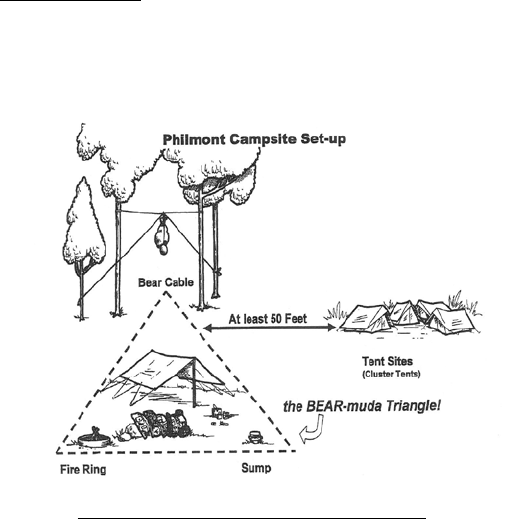
34
is sll necessary for those using their bowls. Meals not packaged
t h i s w a y w i l l s l l n e e d t o b e p r e p a r e d u s i n g t h e P h i l m o n t m e t h o d .
Rangers will teach the proper cooking and cleaning procedures to the crew
at the beginning of the trek using pots, camp suds, hot water, and Philmont
sumps. This is an important skill for crew members to learn and helps
reinforce the Patrol Method on the trail by rotang this valuable posion
on the crew duty roster to all members of the crew. Both methods also
create an environmental impact, the potenal for increased odors that are
carried in backpacks, hung in bear bags, or le in refuse containers impact
the bear and wildlife procedures. Using alternave cooking methods creates
addional “wet” trash (clean, dry bags can be recycled) that takes up scarce
refuse space in the backcountry and then has to be hauled to a landll. Your
cooperaon in this eort will help support Philmont’s mulple sustainability
iniaves and will make a posive and lasng impact on the environment.
Bearmuda Triangle
Your Ranger will teach your crew how to set-up your campsite using the
“Bearmuda” Triangle. This method concentrates all acvies that might
have a smell within a triangle formed by the re ring, sump and bear
cable (or bear box). Tents are set up outside the triangle while backpacks,
dining y, cooking and dish washing are set up inside the triangle. The
tent area should be located at least 50 feet from the “Bearmuda” Triangle.
PRESERVING THE PHILMONT WILDERNESS
Philmont is a magnicent wilderness camping area with an immense
network of trails and camps ed together by service roads designed for
service and protecon of both campers and land.
Since 1938, thousands of young people have enjoyed the great scenic

35
beauty of Philmont’s mountain terrain and experienced the unique and
memorable programs of its staed camps. However, in the past, a number
of inconsiderate and impolite Scout campers, employing improper camping
methods have marred certain areas of this magnicent land. Consequently,
Philmont asks all campers and their advisors to commit themselves to good
Scout camping and genuine wilderness understanding.
Each camper and advisor will be asked to sign the Philmont Wilderness
Pledge, which declares that they will do everything possible to preserve the
beauty and wonder of the Philmont wilderness and its facilies through good
Scout camping. It is expected that Philmont campers will follow this pledge at
all camping areas that they might visit throughout America.
WILDERNESS PLEDGE
The 5 areas of emphasis of the Philmont Wilderness Pledge are:
1. Lier and Gra: Each camper should make sure that all backcountry
facilies, trails, campsites, and latrines are le neat and clean, including
Camping Headquarters, shower and tent areas.
While lier can be picked up, gra oen permanently defaces BSA
property and detracts from the “Philmont experience”. Do not contribute
to this problem. Any Gra le on Philmont facilies will result in
consequences, including the revocaon of the Philmont Arrowhead
2. Wildlife: Respect Philmont’s wildlife, including livestock. Follow all
guidelines regarding food handling and trash disposal. Never feed or harass
livestock or wild animals.
3. Water: You are in a land where water is scarce and very precious.
Conservaon and wise use of water has been pracced since the rst person
entered this land. Use water properly; never bathe, do laundry, wash dishes,
or play in or near a spring or stream. Do not disturb or throw rocks in springs
or touch any solar pumps. They are easily damaged and the ow of water can
be disrupted. Everyone needs water and you should leave each spring and
stream as clean as you found it.
4. Trails: Pledge to respect Philmont trails. Do not cut green boughs or trees,
or mark on them. Do not cut across switchbacks, and do not alter or change
trail signs.
5. Campsites: Each crew is responsible for leaving a neat and orderly
campsite, whether it be in Camping Headquarters, staed camps, or non-
staed camps. Your campsite should be le lier-free with its latrine and
sump clean. Fires, if permied, must be le DEAD OUT and then cleaned
of debris before you leave. Do not trench tents; always pitch them on high
ground. You should respect the feelings of those crews camping near you and
those that will come aer you.
Philmont serves over 20,000 Scouts, Venturers, Explorers and leaders
each year. Consequently, some trails and camps are subjected to heavy use.
Nevertheless, it is not the wear of so many pairs of boots that mars Philmont.
It is the carelessness and thoughtlessness of inconsiderate campers. It is our

36
sincere hope that through your commitment to the Philmont Wilderness
Pledge and Leave No Trace principles, Philmont will always remain a beauful
and clean place to enjoy high adventure.
Leave No Trace
Hiking and camping without a trace are signs of an expert outdoorsman and
of a Scout who cares for the environment and Philmont. Your Wilderness
Pledge Guia will lead the crew discussion on each principle. They are:
1. Plan ahead and prepare.
2. Travel and camp on durable
surfaces.
3. Dispose of waste properly.
4. Leave what you nd.
5. Minimize campre impacts.
6. Respect wildlife.
7. Be considerate of other visitors.
REPORT ARTIFACTS
Philmont is a natural outdoor biological, geological, archaeological, and
historical laboratory and museum. Countless variees of rock, plants,
and animals are found here, as well as abundant evidence of past human
habitaon from Nave Americans (arrowheads, pot shards, grinding stones,
etc.) to old mining camps (boles, cans, equipment, cabins, etc.). Specimens
of plants and animals (including mule deer antlers, elk sheds, or animal
skulls), or arfacts menoned above, are to be observed and le where
you discover them, not collected and removed from Philmont. Reports
of discoveries are helpful in reconstrucng Philmont’s archaeological and
historical past. These should be put in wring and le at the Camping
Headquarters during the check-out process.
SAFE AND HEALTHY CAMPING AND HIKING
Strict adherence to proper health and safety pracces is crucial at Philmont.
Campers are responsible to themselves for remaining strong and healthy.
Failure to purify water or to rinse dishes thoroughly may aect everyone in
the crew. Health and safety are a crew responsibility, as well as individual
ones. Here are some wise trail pracces that will help you and your crew be
strong, safe, and healthy.
Keep Personally Clean
Good campers are clean. Personal cleanliness will make you feel beer. Take
pride in the personal appearance of yourself and your crew. Your appearance
will be compared with that of other crews from all parts of America. A haircut
is recommended the day before you leave for Philmont. Do your best to
keep your hair washed and combed when you are in the rugged, challenging
wilderness. Showers are usually available (except during drought periods)
at Indian Wrings, Ponil, Baldy Camp, Sawmill, Cimarroncito, Clarks Fork,
Cyphers Mine, Beaubien, Phillips Juncon, and Miners Park. Sponge baths
can be taken at most camps.
Caring for Your Feet
Proper foot care is essenal to a successful Philmont trek. Blisters and foot
injuries are one of the most common injuries suered at Philmont but are

37
completely preventable with some simple steps. Address ingrown toenails
and foot issues at home well in advance of your trek. Cut your toenails short
and square-don’t round corners. Clean feet before and aer hiking to remove
any dirt or debris that may cause blisters. Change your socks daily. Always
keep your feet and socks dry. Prevent blisters by treang hotspots before
they become blisters. If a blister occurs, reduce fricon in the aected area
by changing shoes and socks, surround with a ring of moleskin or cover with
medical tape. Treat cuts and sores on your feet with ansepc and adhesive
bandages.
Wash Your Clothes
The mark of a rst-class backpacker is clean clothes. You can wash clothing
at shower houses. They will dry quickly in Philmont’s low humidity.
Feminine Hygiene
Whether you are expecng your period or not, plan to bring your typical
feminine hygiene products with you. You are coming to a new elevaon and
are exerng your body beyond what you would typically do. The unfamiliar
environment and diet can aect your hormone levels causing another period
to start even if you just nished your cycle. If you typically have a light ow,
it is recommended to bring extra tampons and pads with you because your
ow might increase due to the exeron. When choosing what products to
b r i n g w i t h y o u , b r i n g w h a t i s c o m f o r t a b l e a n d w o r k s b e s t f o r y o u .
If you have a period on trail, here are some ps on how to make things
a lile easier so that you can connue to enjoy your experience. First, no
maer what type of hygiene product you decided to bring with you, both
used and unused are smellable and will need to be treated as such. If you are
worried about needing to change your pad or tampon during the night you
can put one inside your sock and then inside your shoe before you go to bed.
Second, Red Roofs are a perfect and more private place to change your pad
or your tampon. Don’t dispose of your used products there, instead place
them in an opaque Ziploc bag (you will be able to get black Ziplock bags at
Ouing Services) and dispose of them with the rest of your crew’s trash.
It is also recommended to keep your unused hygiene products in a separate
Ziplock bag to keep them dry. If you decided to use a reusable opon like a
diva cup, then you can pour the contents into a Ziplock bag or into a cathole.
If you pour the contents into a Ziplock bag, the bag will need to go up into the
bear bag. You can rinse and clean the diva cup with water and toilet paper
which will also need to go in the Ziplock or in the cathole.
Dehydraon
Low humidity and strenuous acvity cause your body to lose enormous
amounts of uids and electrolytes. This uid loss is occurring even though
you may not feel like you are sweang and may not feel thirsty. You need
to drink more water than you normally would at home, drinking six to eight
quarts per day may be necessary to maintain adequate hydraon. The salt
content of Philmont’s meals is adequate to replace your loss of salt from
sweang. Salt tablets are not recommended, but alternang water and ½

38
strength sports drinks is encouraged.
Symptoms of dehydraon include light-headedness, dizziness, nausea,
general weakness, muscle cramps, and somemes fever and chills. Hot, dry,
clear days accelerate loss of body uids. To prevent potenal dehydraon,
problems plan to hike early in the morning to avoid the intense heat of
midday and take more water breaks than you normally would. As always,
prevenon is key.
Heat Exhauson
Prolonged physical exeron in a hot environment may cause heat
exhauson. Symptoms of heat exhauson are faint or weak feeling, dizziness,
nausea, or a rapid pulse. Body temperature usually remains near normal. The
aicted person should rest in a comfortable, shaded environment and drink
uids.
Heat Stroke
If heat exhauson is le unrecognized and untreated it may progress into
heat stroke. In heat stroke the body’s cooling mechanisms stop funconing
and the body temperature soars. Symptoms of heat stroke may include
hot, red, dry skin, but is most recognizable by the change in the level of
consciousness. To treat heat stroke, cool the paent immediately with a dip
in a stream or put him/her in the shade and drape bare skin with wet cloths.
When the paent is able to drink, give uids. Treat for shock and get help.
Hypervenlaon
A feeling of panic accompanied by rapid breathing with shallow breath
is symptomac of hypervenlaon. The subject loses carbon dioxide from
the bloodstream and may become numb around the mouth and in the
extremies. If untreated, the person may experience violent spasms in the
hands and feet and even lose consciousness. Hypervenlaon occurs fairly
frequently, especially among teenagers and young adults while undergoing
strenuous acvity at high elevaon. Diculty breathing or breathing heavily
while hiking is normal and shouldn’t be confused with hypervenlaon.
Although it is usually not serious for an otherwise healthy person, the
symptoms of hypervenlaon can be frightening to the subject and the crew.
The most eecve treatment is to have the subject re-breathe his or her
own air from a plasc bag or stu sack. The higher concentraon of carbon
dioxide in re-breathed air will enter the lungs within 10-20 minutes, the
carbon dioxide will restore to a normal balance. Reassure the subject and tell
the person to take long, deep breaths from the bag.
Hypothermia
Hypothermia results from exposure to cold, wet weather, with most
cases developing in air temperatures of 30˚ to 50˚F (common in Philmont’s
high country). Wind, wet clothing, or exhauson increase the chance of
hypothermia. Always carry rain gear with you on side hikes and put it on
before it begins to rain. Symptoms include faltering coordinaon, slurred
speech, loss of good judgment, disorientaon, numbness, and fague. Wet

39
clothing must be replaced with dry, (preferably wool or polypropylene)
clothing. Apply heat to the head, neck, sides, and groin with warm-water
boles. Put the paent in a sleeping bag and give hot sugary liquids (if able
to drink without choking). Do not rub the subject’s body, as that may cause
injury. If the paent is able to sit up and eat encourage him or her to eat a
snack as increased metabolism from digeson will help to warm the paent.
Sunburn
Prevent sunburn by wearing a broad-brimmed hat and applying a high-
numbered sunscreen (at least 25 SPF). Cover the most suscepble parts of
your body (nose, head, face, neck, ears, back of knees, and legs). Fair-skinned
campers should apply protecon early in the morning and reapply it during
the day. If you do become sunburned, treat it immediately. Get the aicted
person to shade and administer uids. The incidence of developing skin
cancer is fairly high among people who have been severely sunburned during
childhood. Taking preventave measures is a wise precauon.
Acute Mountain Sickness (AMS)
Parcipants who live at less than 3,000 feet elevaon may require 2 to
3 days or more to adapt to a higher elevaon above 6,000 feet. Teenagers
and young adults have a higher incidence of acute mountain sickness
(AMS). A gradual ascent of not more than 1,000 feet per day (above 6,000
feet) elevaon will help prevent AMS. Physical symptoms of AMS include
headache, insomnia, fague, shortness of breath, lassitude and intesnal
upset. Psychologically, a person may become irritable and have diculty
concentrang. AMS usually occurs at elevaons in excess of 6,500 feet—all of
Philmont qualies.
To help your body adjust to the altude make sure to maintain good
hydraon, eat full meals and get a good night sleep in the rst few days at
elevaon. Descending to a lower elevaon, avoidance of strenuous acvity
and taking Tylenol or Ibuprofen for headache may relieve the symptoms of
AMS. If this is not successful within 24 hours, the subject may need to be
transported to base camp. While regular physical condioning prior to the
trek is benecial, it does not prevent the development of AMS.
Avoiding Wildlife-Borne Diseases
The three most dangerous infecous diseases found at Philmont are spread
through wildlife contact. Hantavirus causes Hantavirus Pulmonary Syndrome,
a severe and somemes fatal respiratory disease, and is spread by the virus
contained in feces and urine from deer mice. Rabies is a fatal disease spread
by the bite of infected animals – parcularly bats and skunks. Plague is a
severe, but treatable, disease spread by eas from infected rodents. All three
diseases are comparavely common in northeastern New Mexico.
To avoid these dangerous diseases, all parcipants and sta in the Philmont
backcountry must:
•Avoid contact with rodents and rodent burrows or disturbing dens (such as
pack rat nests).

40
•Do not enter enclosed buildings unl they have been appropriately
cleaned and disinfected. Report structures that have not been cleaned and
disinfected to the nearest sta camp.
•Sleep in tents or approved sleeping structures. Do not sleep on bare
ground; use of tents with oors is required. No cowboy camping.
•Do not sleep in buildings not specically approved by Philmont
management for sleeping.
•Store food in a bear bag hung from a cable.
•Properly package all garbage and trash, and discard in covered trash
containers at staed camps.
•Use only water that has been properly disinfected for drinking, cooking,
washing dishes and brushing teeth.
Accidents
Most accidents occur late in the day in camp, not on the trail. Many of them
involve horseplay. Fague, mild dehydraon, and altude eects may impair
a crew member’s performance and judgment. Rock throwing, improper use
of equipment, foolishness in hanging bear bags, climbing steep rocky ridges,
running through campsites, climbing trees, and carelessness around re
lays are prevalent causes of accidents. To avoid them, individual and crew
discipline should be maintained, and safety pracced in all acvies.
Stress and Group Dynamics
Eleven days in the rugged Philmont terrain somemes produces mental
and emoonal stress, especially for members of crews whose training and
preparaon back home has been minimal.
Each crew is subjected to physical demands such as carrying a 35-50-pound
backpack; gasping for breaths at high elevaons; facing weather condions
varying from hot, blazing sun to cold, wet, foggy periods of several days; and
geng started on camp chores early and doing them eciently to parcipate
in programs at the next staed camp. These physical demands can create
irritability and mental stress.
Personality dierences and minor internal crew conicts somemes
produce emoonal stress. Each crew member should ask, “How can I
eliminate or reduce my habits that may be oensive to others?” Good
leadership on the part of the Crew Leader can help reduce the potenal for
conicts. The Crew Leader should 1) discuss alternave choices with the
crew, 2) listen to each crew member’s ideas, 3) make decisions in the best
interest of the enre crew, 4) assign dues to implement those decisions, 5)
evaluate how the crew did with input from each individual. Giving objecve
feedback based on observed behaviors rather than direcng it to a specic
person or persons can be extremely benecial in resolving conicts.
If stress is beyond the capabilies of the crew to manage, contact the
nearest staed camp for help. Depending upon the circumstances, a camp
director or Philmont Chaplain may be called in to assist. If a serious conict
develops, a camp director or chaplain has beer success in helping the crew
overcome it when called early, instead of allowing it to escalate.

41
Purify All Drinking Water
All water from all sources—including springs, streams and wells—must be
puried. (Most sta camps have treated water. Be sure to check with sta
that water is safe to drink.)
The most eecve treatment to purify water is to heat it to a rolling boil.
Philmont provides Micropur tablets that release chlorine-dioxide that is
eecve at killing waterborne bacteria and viruses that cause disease.
Some crews choose to carry water lters in order to remove small parcles
from water collected in streams. (Puriers remove giardia, bacteria,
cryptosporidia and viruses – most lters do not remove viruses.) If using
a lter, you will most likely also have to use addives, or boiling to kill all
viruses. You must bring extra cartridges and spare parts.
Dishwashing Procedures
Aer each meal, scrape and wipe dishes, utensils, and pots as clean as
possible. Wash using a mild, biodegradable soap in warm water. Use scrub
pads to remove hardened food remains. Rinse dishes in boiling water. Before
each meal sterilize dishes, utensils and pots in boiling water. This disinfects
any contaminaon from being in a pack.
Dishes and utensils will air dry quickly in Philmont’s low humidity. Wash
your dishes near a sump, not a water spigot which may contaminate the area.
Proper washing, rinsing, and sterilizing of dishes and utensils will prevent
diarrhea, dysentery and a host of other medical problems.
Use of Sumps
When disposing of waste water, drain it through a strainer provided by
Philmont. The water should be disposed of in a provided sump or at least 200
feet from any campsite or water source. Solid maer should be carried to the
next staed camp.
Disposal of Trash and Garbage
Proper disposal of trash and garbage insures a clean camp and protects
everyone’s health. Do not bury garbage or dump it in latrines; bears and
rodents will soon retrieve it. Put trash and garbage in a plasc bag and
give to a sta member at the nearest staed camp. Philmont asks that you
consolidate your trash as much as possible to reduce the volume before
giving it to a staed camp. Your Ranger will explain the recycling programs
available for some backcountry items.
Latrines
Pit latrines are provided for your use in backcountry camps. They should be
kept clean and free of gra by members of your crew. At other locaons
you may need to dig a cat hole. Dig it at least 200 feet from any trail, water, or
campsite. Dig the hole about 6 inches deep, but no deeper than the organic
topsoil. Aer use, ll the hole completely, pack and mound the earth to avoid
erosion. Garbage and trash must not be put in any latrine because animals
will dig it out.

42
Tobacco
Our Scout Oath reminds us to keep ourselves physically strong. The use of
smokeless or smoking tobacco, including vaping and E-cigarees adversely
aects the body and causes cancer. Because of the ever-present wildland re
danger, smoking is not permied on Philmont trails. If adults must smoke in
the backcountry, do it in an established camp near an unused re ring. No
smoking is permied in Camping Headquarters except the designated area:
back room of Advisors Lounge. Please refer to: www.scoung.org/health-
and-safety/gss/gss04/.
Alcohol and Drugs
Scoung acvies are not a place to possess, distribute, transport,
consume, or use any of the following items prohibited by law or in violaon
of any Scoung rules, regulaons, and policies: alcoholic beverages or
controlled substances, including marijuana. Possession of unprescribed
drugs or misuse of prescribed drugs are also expressly prohibited. Groups or
individuals found in violaon of this naonal Boy Scouts of America policy will
be sent home immediately at their expense.
Firearms, Weapons, Fireworks
Firearms, ammunion, archery equipment, tomahawks, etc. are used at
Philmont on a closely controlled basis under proper, trained supervision.
Except for law enforcement ocers required to carry rearms within their
jurisdicon, rearms shall not be brought on camping, hiking, backpacking,
or other Scoung acvies, including to Philmont Scout Ranch. If you cannot
avoid bringing a rearm, it must be in a locked case and checked in for
safekeeping at the registraon oce when you arrive and checked out when
you depart. DO NOT store rearms in vehicles!
Sheath knives, xed blade knives and hatchets are not to be brought to
Philmont. Fireworks are dangerous, pose a re danger, and are prohibited to
be possessed at all Scoung funcons.
Prevent Wildland Fires
Our forests are a beauful and valuable heritage. Philmont’s dry climate
requires everyone’s cooperaon to prevent wildland res. The United States
Forest Service points out that good outdoorsmen follow these pracces when
using res:
1. Never build a re against a tree, stump, root, or log as it may be dicult
to control or put out.
2. Avoid building a re on a grassy area, as this destroys one of our most
valuable assets. Grass will not grow for several years on a re spot. (At
Philmont, always use established re rings.)
3. Rake up ammable material before building a re.
4. Never toss a match away. Put it in the re or hold the match unl it
stops smoking, then break it between the thumb and ngers of one
hand and step on it.
5. Never leave a re unwatched, even for a few minutes.
6. Never try to put a re out by scaering it.

43
7. Put out your re with sand, damp earth or, best of all, water. Aer the
rst soaking, sr the ashes with a sck and add more water, then feel it
with your hands to make sure it is out.
8. Keep in mind the forest and wildlife resources and possibly, human lives
you are protecng by your care in handling re.
Be alert for wildres. If you see white smoke boiling up, you may have
spoed a wildland re. Prairie res spread quickly, and their smoke is
sweeping. If you spot a re or think you have, report it to your Advisor,
who will report it to the nearest camp director or sta member as soon as
possible. Your crew should not aempt to ght wildres and should quickly
leave the area. Trained re ghters will exnguish res quickly once they are
reported.
Smart Phones
In an age of technology, smart phones are a common tool to use in
everyday life, and just like a pocketknife, there are proper and improper
ways to use this tool within Scoung. While backpacking in the wilderness
of Philmont is an experience best enjoyed without the distracons of
technology, Philmont recognizes that their use is more common than ever.
Photographs and videos can be taken on these phones and a number of
useful outdoor “apps” are widely available.
If it is imperave that a smart phone be taken on the trail, please ensure
that it is being ulized in a way that enhances the Philmont experience, not
detracts from the adventure for your crew or that of other crews on the
trail. Please be aware that cell phone service is very limited in Philmont’s
backcountry. Download o-line apps that will help the learning experience!
Find a good star/constellaon app, or an animal tracks/scat/calls app,
compare bird calls you hear on the trail with a bird call app, or the Boy
Scout Handbook app might prove useful on the trail. Reserve texng and
phone calls for emergency use only, make it a contest to see how long crew
members can go without using their phone! Also, keep in mind that there
are NO opportunies on the trail or in any backcountry camp to charge a
smart phone, camera, or other electronic device. Please plan on using a solar
charger for your devices. Guidelines for use should be reviewed by the crew
prior to and during their trek.
Drones
Philmont does not allow the use of drones by parcipants for any purpose
and restricts the use of drones to only include the Philmont Markeng
Department and the Philmont Fire Department.
Climbing
Falls from clis and rocky ridges are the most serious accidents that occur
at Philmont. Campers should be constantly alert to this very present danger
when climbing steep, rocky, mountain slopes. Common sense will enable
you to dierenate between dicult and dangerous areas and bypass them
completely.
Philmont conducts rock climbing at three staed camps. These are the only
places where rock climbing is to be done, and then only under the supervision

44
of Philmont rock climbing sta.
Avoid throwing or rolling rocks. This is parcularly dangerous in steep
country. There may be other hikers below you. The “A-B-C” of mountain
climbing is Always Be Careful.
Lightning
Reduce lightning risk in the backcountry by ming your visits to high-risk
areas with local weather paerns, nd safer terrain if you hear thunder, avoid
trees and long conductors once lightning gets close, and get in the lightning
posion if lightning is striking nearby and you can’t get to safer terrain. There
is no safe place outside in a thunderstorm.
Types of Lightning Danger:
• Ground Current - 50-55% of all injuries - is electrical current dispersing
through the ground. KEEP YOUR FEET TOGETHER AND TOUCHING. (One
point of contact)
• Side Flash - 30-35% of all injuries - occurs by lightning arching away
from a tall object to less resistance and not following the object to the
ground. AVOID STANDING CLOSE TO TALL OBJECTS.
• Upward Leaders - 10-15% of all injuries - launched from the tops of
tall objects including people near each downward leader. Suppress
the tendency to launch a streamer by CROUCHING WHILE IN THE
LIGHTNING POSITION.
• Touch Volt - 3-5% of all injuries - caused by contacng voltage in
another object such as a wire or metal fence. AVOID CONTACT during
lightning storms.
• Direct Strike - 3-5% of all injuries - is the least common of all lightning
strike injuries. STRIVE TO MOVE TO SAFER TERRAIN.
Lightning Posion
It is important to keep your feet together and touching. (Ground Current) If
possible move to a crouching posion. (Upward Leaders) It is also acceptable
to sit on your backpack and pull your knees in to create the smallest contact
with the pack. The crew should try and spread out at least 30 feet apart. If
one member of your crew is jolted, the rest of you can give assistance. Keep
track of one another by numbering o in a loud voice from me to me. If
you are in a tent and a lightning storm approaches, sit up on your foam pad
and pull your knees in to create the smallest contact with the ground. Be
sure to pitch your tent in an area that is protected from lightning strikes.

45
Flash Floods
In mountainous country, small streams can become raging rivers in a few
minutes or even seconds. It is important to be alert to the possibility of
ash oods and take steps to avoid a dangerous encounter. During and aer
periods of heavy rain, stay away from natural drainage areas. Always know
where you are and how to get to higher ground. Watch for indicators of ash
ooding such as an increase in the speed or volume of stream ow.
Beware of areas directly aected by or downstream from lands impacted
by previous wildland res. Pitch your tents on higher ground. Never aempt
to cross a stream that is over knee deep on anyone in the crew. Retreat to
the nearest staed camp and request an inerary change. Stay out of ood
waters and narrow canyons.
What to Do When Confused
When your crew hikes together, instead of spreading out over a long
distance on the trail, the possibility of anyone becoming confused is remote.
By using a map and a compass with reasonable prociency, you will always
know where you are. Never allow one member of your crew to leave camp or
side hike alone. Follow the “rule of four” by always hiking together in groups
of four or more. If one person is injured, one treats the injured and the other
two go for help.
Philmont has many trails. If you become confused, it is best to stay put.
Make camp at a safe place, build a re, and keep it going. (This should be
done very carefully during drought condions.) This may help a search party.
Prepare your crew for a comfortable night. Extra food can boost the morale
of a confused crew.
Bears
Bears are a unique and natural part of the Philmont environment. Like
all wild animals they must be treated with respect. The black bear is not
normally aggressive, and many crews will not even see one.
Anything with an odor (except the human scent) may aract bears. It does
not maer if the odor is food-related. Any odor may generate a curiosity in
a bear which may result in a closer examinaon of that odor. At Philmont, all
items with a smell are placed in a bear bag and hung at night or during the
day when parcipang in program. It would be useful for each member of
the crew to have their own diy bag with their personal smellables in it to
put in the bear bag. A few of these items are food, soaps, toothbrushes and
toothpaste, lip balm, sunscreen, mosquito repellent, and rst aid kits.
Good Scout camping pracces are the best way to avoid contact with the
bears. Avoid carelessness that results in improperly disposed food. Store all
uneaten food in a bear bag. Do not put uneaten food in a latrine. Cook close
to the re ring and away from the sleeping area. Clean up only at the sump.
Never eat food in a tent—the odor remains aer the food is gone. Tents must
be used for sleeping.
Human scent does not aract bears. The supercial applicaon of scented
loons, soaps, deodorants, shampoo, or spilled food may however, aract

46
the aenon of bears. Washing the body with various products should be
done before mid-aernoon so that the residual smells have dissipated before
night. Avoid perfumed products with strong odors. Any clothing on which
food has been spilled must be placed away from the sleeping area at night.
Deodorant is not allowed on the trail. Use sunscreen and insect repellent in
me for odors to dissipate before night.
If a bear does visit your campsite, stay away from it and make noise.
Protect your food by hanging it from a cable erected by Philmont for that
purpose. Crews that stop for a program or a conservaon project should
check with sta for bear procedures. Crews hiking o Philmont onto our
neighbors’ lands will need an extra rope for hanging bear bags. In Philmont
camps the weight of the rope alone is sucient to carry it over the cable. On
neighbors’ property, where there are no cables, crews will be instructed on
how to create their own cable and bear bag system using three ropes. Never
risk injury by aempng to protect your food or equipment from a bear.
Bear spray and horns are unnecessary and not allowed. When you arrive at
Philmont, your Ranger will thoroughly train you on those camping pracces
that are most eecve in keeping wildlife away from your camp.
Ralesnakes
Some parts of Philmont are inhabited by prairie ralesnakes. They generally
live at elevaons below 8,000 feet. Prairie ralers are not aggressive unless
provoked and usually sound a warning rale before striking. If you see one,
give it a respecul distance. Ralesnakes are benecial in controlling rodent
populaon. Do not aempt to kill one yourself—report it to the nearest sta
member. Ralesnake bites are rare at Philmont.
Insects
During wet periods mosquitoes take a new lease on life and they love to
feast on young blood. Cauon should be taken to prevent possible infecon
by West Nile Virus. Keep tents zipped closed to reduce the number of
mosquitoes from entering. Insect repellent is recommended for the trail.
Philmont monitors the risk of any mosquito borne illnesses in our area.
Updated informaon will be shared at the Advisors Meeng upon arrival.
There are bees and wasps at Philmont. If you are allergic to sngs, be sure
you have proper medicaon and that a crew member is informed of your
condion and the treatment you may require.
MEDICAL TREATMENT
Each crew carries its own rst aid kit to treat minor cuts, scratches and
burns. Philmont requires that at least two persons in each crew be currently
cered in Wilderness First Aid and CPR (or equivalent). More serious
cases can be treated by Philmont’s trained Backcountry Sta. Backcountry
sta work with Philmont Inrmary sta, which include physicians, nurses,
medical students, and trained emergency response sta. All sta camps have
two-way radios for reporng serious illnesses and injuries to the Inrmary.
The Inrmary can provide recommendaons for treatment over the radio,

47
arrange transport to base, or send a medical team to the paent.
Everyone who gives rst aid when blood or body uids may be present
must wear protecve gloves. Anyone who comes into contact with body
uids or substances should immediately wash with soap and water skin
surfaces that came in contact with body uids. Report it at the next sta
camp so that they can contact the Inrmary.
Several Philmont employees are cered by the New Mexico State Police
to serve as Field Coordinators for search and rescue operaons. When
necessary, Philmont can request resources from throughout the state of New
Mexico and adjacent states including trained search and rescue personnel
(in addion to the Philmont sta), search dogs, trackers, helicopters and
other support. Philmont has wrien plans for managing dierent types
of emergencies that may arise. Sta are trained in how to respond to
emergencies that are most likely to occur.
The most common injuries/illnesses treated at the Philmont Inrmary are:
• Sprains (knee or ankle)
• Abrasions/Laceraons/Blisters
• Altude Sickness
• Dehydraon
• Upper Respiratory Infecons
• Upset Stomach
• Sore Throat
• Nose Bleeds
First aid providers should be knowledgeable in recognizing and treang
these ailments.
First Aid Kit
These items are recommended for a rst aid kit to be used by a crew en
route to, during, and returning home from a Philmont trek.
25 Assorted Band-Aids Blister Kit
10 Gauze Pads 4x4 Anhistamines (Benadryl)
1 Tape Roll 1”x5 yards Disposable Alcohol Wipes
1 Elasc Bandage 4” Triple Anbioc Ointment
Hydrocorsone Cream CPR Barrier Device
Tylenol Triangular Bandage
Ibuprofen Small Scissors
Antacids Throat Lozenges
Medicated Foot Powder Tweezers
Non-Latex Gloves Ziploc or Small Biohazard Bag
Many “over the counter” medicines and rst aid supplies are available at
the Tooth of Time Traders and backcountry trading posts.

48
Camper Insurance Coverage
All campers and leaders are covered by a limited accident and sickness
plan through Health Special Risk, Inc. The policy has a maximum coverage of
$15,000 for medical benets and $7,500 for sickness expense benets and
includes an excess insurance provision. The plan will pay all eligible expenses
incurred from a covered accident or sickness not paid by any other collecble
insurance or pre-paid health plan. There is no deducble under this plan.
Emergency Transportaon Costs
Philmont can assist with transportaon arrangements to nearby travel
hubs when a family emergency (death or illness) occurs during an expedion
requiring a parcipant to return home, or if the parcipant must return
home for personal medical reasons. Be aware that because Philmont is in
a remote locaon, transportaon may not be available on short noce and
there could be a delay before a parcipant is able to depart. Parcipants
who must return home before the end of their expedion are responsible
for all transportaon costs to the airport. Philmont will coordinate rides to:
Raton train staon/Greyhound bus staon, Albuquerque airport, Colorado
Springs airport, and Denver Internaonal Airport at a cost. Reimbursement of
approved travel costs and cket change costs may be covered by purchased
camper insurance.
PROGRAM FEATURES
Each inerary is carefully developed to give your crew the maximum
enjoyment of hiking and camping in the high mountains of the Sangre de
Cristos. Ineraries also include certain staed camps where you will pick
up food and parcipate in program features. Although programs are not
compulsory, they are recommended to get the most benet from your
Philmont experience.
Archaeology
The Ponil country in the northern secon is rich in the prehistoric
background of Nave Americans. Your crew can help reconstruct Philmont
history while parcipang in this fascinang program and learning about the
tribes who inhabited this area.
An educated archaeologist and sta explain and supervise the program
in the North Ponil Canyon at Indian Wrings camp. Acvies may include
assisng with excavaons or preparing specimens and arfacts.
PLEASE NOTE: You can assist the archaeology program by being observant
as you hike the trails. You may discover an arfact that will lead to further
discoveries. Philmont’s anquies righully belong to Philmont and are most
meaningful when le where found. Others can then share the benet of your
discovery. Please report all nds to one of the sta archaeologists at Indian
Wrings, the Naonal Scoung Museum, or Camping Headquarters.
Astronomy
Visit the historic Ring family home at Ring Place, but at night be treated
to some of the darkest skies in North America. The Astronomy program

49
featured each night allows you to gaze through a professional duty telescope
to see the rings of Saturn, distant stars, and the moon.
Blacksmithing
The ring of hammer striking iron echoes through the mountains around
Black Mountain, Cyphers Mine, French Henry, Metcalf Staon, and Rayado/
Kit Carson. Here, sta blacksmiths will acquaint you with a working forge,
blower, leg vice, hardie, and an array of tongs used to grip red-hot iron. They
will discuss and demonstrate techniques for ring the forge, working metal,
and tempering the nished product.
Burro Packing
No animal is more closely associated with the colorful history of the
Southwest than the burro. Burro packing methods are explained and
demonstrated at Ponil and Miranda. Your tents and food may be packed on
burrows using a diamond hitch.
Burros are available for use on the trail in the northern poron of the
ranch, starng or ending at Ponil and Miranda. Burro traps (holding pens for
overnight stops) are located at Ponil, Pueblano, Miranda, Elkhorn, Flume
Canyon, Head of Dean, and Baldy Skyline. Hay for feeding is provided at
these camps. If your inerary provides for packing burros, take advantage of
this unique opportunity to pack them just as the miners once did. All crews
on a Burro Inerary must take a burro.
Canna
Abreu and Ponil oer the opportunity for a thirst-quenching root beer in a
Mexican or Western-style canna. You can buy root beer for your whole crew
or a cup for yourself.
Challenge Events
A series of acvies that will test the teamwork, skill, and resourcefulness
of your crew awaits you at Dan Beard, Head of Dean, and Urraca. While the
challenges can be met by every crew, the real contest is with yourself. Did you
do your best? How would you do beer next me? What did your crew learn
that will help you work together to meet the challenges of your trek?
Chase Ranch
The Chase Ranch is located along the Ponil Creek adjacent to Philmont
Scout Ranch. It was founded by Manly and Teresa Chase in 1867 and has
been operated through four generaons of family members. Beginning in
November 2013, Philmont Scout Ranch established a special use permit with
the Chase Foundaon and began operaon of the Historic Chase Ranch.
A trailhead and bus turnaround to begin and end treks is located near the
Main House at the Chase Ranch. Tours are oered of the 1871 house and
surrounding grounds. Several ineraries cross porons of the Chase Ranch
and two Low Impact Camps have been designated in Chase Canyon. A staed
camp has also been added at the old Chase Cow Camp and features a rock
climbing and rappelling program.

50
Conservaon
In 1938, Waite Phillips donated the rst tract of what would become
Philmont Scout Ranch to the Boy Scouts of America. Prior to that gi and
even before Phillips’ ownership, that same land had been inhabited for
thousands of years by Ute, Comanche, Pueblo, and Jicarilla Apache people.
As American colonizaon began in the 1800s, and as mining, logging, and
ranching industrialized the landscape, the high desert environment began
to experience use of an unprecedented intensity. Over the past 80+ years,
Phillips’ original gi and subsequent mul-thousand-acre acquisions have
come to host over one million Scouts camping, hiking, and horse-back riding.
Intense land use of the last 120 years has not occurred without an impact
on the local ecosystem and landscape. Phillips envisioned that Scouts could
give back to the Ranch by working to preserve its integrity as a natural
recreaonal resource. Since its beginning, Scouts vising Philmont have
been able to preserve, repair, and enhance the natural integrity of the
Ranch for future generaons by parcipang in projects ranging from trail
construcon and maintenance, stream restoraon, and re rehabilitaon to
forest fuels reducon, erosion control, and invasive species removal. Your
crew will have the same opportunity this coming summer. As a requirement
for the Arrowhead Award, your trek inerary will feature an assigned 3-hour
conservaon project crical to the connued operaon of Philmont Scout
Ranch. This program is facilitated by trained Conservaon Department sta at
one of several conservaon sites across the Ranch.
In contrast to the Arrowhead Award, ten hours of conservaon work are
required for the 50-Miler Award. The three hours earned at Philmont for
the Arrowhead Award may be applied toward that requirement, and the
remaining seven may be completed in your local council or elsewhere.
However, crews may also elect to complete all 10 hours at Philmont
conservaon sites. If your crew is interested in this opon, please speak to
Logiscs during trek planning as well as the Conservaon Department during
your Wilderness Pledge Guia’s meeng.
Due to project needs, priories, aendance, and land use agreements,
all program locaons, mes, and work are subject to change. Program
assignments will be updated aer inerary selecon. These modicaons
will be communicated when available. Any subsequent modicaons will be
further communicated in as mely a manner as possible. Please know that
these necessary changes are not made lightly, and that every eort will be
made to provide for the least interrupon to the rest of your crew’s trek. Your
work is vital to the connuaon of sustainable land use at Philmont, and on
behalf of the Ranch, the BSA, and every Scout who has ever or will ever come
to Philmont, the Conservaon Department extends its deepest appreciaon
for your me and eorts.

51
Connental Tie & Lumber Company
The excing legend of the loggers with the Connental Tie and Lumber
Company will come to life through the sta at Pueblano and Crater Lake.
They will share their skills of spar pole climbing and the use of wood tools
and instruments. Compeon in excing logging events such as log toss,
cross-cut sawing, and log tong races will challenge your crew.
Demonstraon Forest
Be sure your crew takes me to learn about the forests and various forest
pracces taking place at Philmont. A vising Forester will be available to visit
with crew. Between Hunng Lodge and Clarks Fork, near Cito Reservoir, a
Demonstraon Forest has been developed with the support of the American
Tree Farm Organizaon.
Environmental Awareness
Become acquainted with some of the western birds, wildowers, mammals,
lizards, snakes, and insects in this natural outdoor wonderland. Discover what
wildlife passed through camp by observing tracks and other signs—view how
plant and animal species change as you climb higher into the mountains and
learn why these changes occur—walk past the mberline and observe the life
that survives the rigors of this high-altude environment.
Across the Ranch, sta members will oer a program of environmental
awareness through Philmont’s STEM iniaves. These programs will help you
understand Philmont’s ora, fauna, geology, and life zones, and how that can
be a part of maintaining the natural order of things so others that follow can
enjoy them too.
A Philmont Field Guide is available at the Tooth of Time Traders. It will
enhance your environmental awareness during your trek.
Fly Tying and Fly Fishing
The Rayado and Agua Fria streams in the south oer excellent trout shing.
Though not large, these trout are wary and excing to catch as a part of
Philmont’s catch and release shing programs. At Fish Camp, a program
counselor with material and equipment will show you how to e your own
trout ies. The thrill of catching a trout on a y you have ed is hard to beat.
Near Fish Camp, Phillips Juncon, and Abreu a catch-and-release program
is in eect. If you don’t know how to remove the hook from your sh, a
program counselor will demonstrate the correct methods. A tour of Waite
Phillips’ shing lodge, including a narrave of area history is also oered. All
shermen are required to have a current New Mexico state shing license.
Geology
Philmont sta and volunteer geologists have teamed up to provide an
excing and educaonal program of geology and mining technology at sites
where history comes alive—Cyphers Mine, Baldy Town, and French Henry.

52
Gold Mining and Panning
Gold is sll found in almost all streams at Philmont, which was once the
scene of lucrave gold-mining operaons. Mine shas, sluice boxes, and
placer mines dot the mountainsides and valleys. If your inerary takes
you to Cyphers Mine or French Henry, you will tour a real gold mine. Not
working now, the mines are carefully maintained so you can tour the mine
sha. Bring your jacket and a ashlight for the tour. Learn about adventures
and hardships as determined, miners sought their fortunes in these historic
mountains. When you nd some gold, ask one of the sta miners for
some cellophane tape so you can take your discovery home. Gold pans are
available for you to use at Cyphers Mine and French Henry. You may even
run across one of our Roving Prospectors; they will help you learn about gold
panning and prospecng too!
Homesteading
At Crooked Creek, Rich Cabins, and Abreu your crew will visit a working
homestead. The sta will help you learn early day skills such as candle and
soap making, primive farming, wood tool use, and care of farmyard animals.
In keeping with the Southwestern spirit of the program, you will be instructed
in preparing a special Mexican meal at Abreu.
Horse Rides
Philmont owns and maintains a remuda of 300 western horses with
strings located at Beaubien, Clarks Fork, and Ponil. All three camps oer
exhilarang mountain horse rides at mes noted on crew inerary. Be
prompt for your scheduled ride. Reservaons are made at Logiscs on a
rst-come, rst-served basis upon arrival at Philmont. Philmont wranglers are
courteous but strict. They make certain everyone stays in line and maintains
the pace to avoid endangering members of your crew. Even skilled riders
cannot be permied to ride at a dierent pace or away from the group.
Please cooperate with the wranglers by following instrucons for a safe and
enjoyable ride. For your personal safety you will wear a helmet, which will be
provided. Ponchos and maps should not be taken since they may frighten the
horses. Wear long trousers on your horse ride to protect your legs. Closed toe
shoes are required to protect your feet. Persons weighing over 200 pounds
will not be permied to ride.
Jicarilla Apache Life
Apache Springs oers a unique program featuring the lifestyle of the
Jicarilla Apache. You will see how the Jicarilla worked and played. A replica
Jicarilla village has been erected for this program. Teepees are furnished with
realisc replaces, back rests, robes, hides, and baskets for you to see.
3-D and Sporng Arrows programs will also be oered. Aer that, you can
enjoy a “Jicarilla sauna” in a sweat lodge, followed by dousing with cold water
(subject to re restricons).
Low Impact Camping
Wildland ethics depend upon atude and awareness rather than on rules

53
and regulaons. While camping o of Philmont property in the Valle Vidal
or any other locaons, you are expected to employ Leave No Trace methods
at Dan Beard, Rich Cabins, Ring Place and other entry points into the Valle
Vidal. You will have the opportunity to learn how to enjoy wildland with
respect to hiking, camping, eang meals, and disposal of trash without
leaving a scar or trace. Your Wilderness Pledge Guia and Ranger will help you
learn the techniques of Leave No Trace at Dan Beard.
Mountain Biking
Enjoy one of America’s fastest growing sports at Ring Place as your crew
takes a wilderness mountain bike ride into the most remote areas of
the beauful Valle Vidal Unit of the Carson Naonal Forest. Along with
riding techniques, you can learn about bike maintenance and bike trail
maintenance.
Mountaineering
Although not a sta-sponsored program feature, mountaineering can be as
fun and excing as any. Restless adventurers seek challenges, camaraderie,
spectacular views, elds of delicate wildowers, smulang exercise, and
solace by climbing high mountains. You can fulll these urges at Philmont
where many challenging mountains await.
Mount Phillips stands at 11,736 feet above sea level, towering over the
beauful southwest secon of Philmont. This peak is a rugged climb with
fabulous views of Eagle Nest Lake, Wheeler Peak (the highest peak in New
Mexico at 13,161 feet of elevaon), and most of Philmont.
Baldy Mountain, named for its rocky, barren top, is a favorite climb for
those camping in the area at and around Baldy Town. Doed with old gold
mines, Baldy Mountain is the highest peak at Philmont, standing at 12,441
feet above sea level. The view from the top is unobstructed and spectacular.
The Tooth of Time, the iconic incisor sing at 9,003 feet of elevaon, rises
abruptly 2,500 feet from the valley oor. A landmark among the old Santa Fe
Trail would signify to selers moving out West that they were approximately
two weeks from arriving in Santa Fe.
Big Red, Black Mountain, Hart Peak, Lookout Peak, Trail Peak, and many
other peaks will test your stamina and give you breathtaking views of
surrounding terrain. Lile Coslla Peak at 12,584 feet above sea level is
located in the Valle Vidal. Many false peaks will keep you guessing as you
work to reach the summit.
Always carry water, rain gear, a jacket, and other essenals when
mountaineering.
Philmont Campres
Throughout the backcountry, various staed camps conduct special evening
campres and programs.
Urraca Mesa’s campire will regale your crew with some of the most famous
ghost stories and mysterious lore of the ranch with music and songs to boot!
Pueblano, and Crater Lake campres relate to the tales of the Old West,

54
logging, and the history of the land. Facts about the Beaubien-Miranda Land
Grant come alive, and the inuence of Waite Phillips and his gi of Philmont
to the BSA provides for a special inspiraon.
At Beaubien and Clarks Fork, the focus is on the Old West with its songs
and stories and true cowboy atmosphere. Ponil oers a nightly Old West
Canna show.
At Cyphers Mine, the story of gold will ring through your ears as an
interpreter relates the life and adventures of the miners of yesteryear at the
nightly “STOMP”.
At Metcalf Staon, be ready for the Railroad Jubilee Campre that regales
stories and songs of railroading history and lore.
At Rich Cabins enjoy the family gathering and hear some stories and music
regaling the life of the Rich family.
Conducng your own campre can be equally smulang, whether you are
camping at Mistletoe, Wild Horse, New Dean, or another trail camp. You and
your friends will enjoy the camaraderie that radiates from the warmth of a
Scoung campre and will be playing an important part of helping reduce
fuel loads in our backcountry(re restricons may prevent building an actual
re).
Post-Civil War Selers
Experience life as it was soon aer the Civil War at this rusc selement.
Shoot .58-caliber muzzle loading ries, learn to do blacksmithing, and meet
former Fort Union soldiers. Black Mountain is one of Philmont’s very popular
living history camps.
Railroading
At Metcalf Staon, learn about the history of the Cimarron & Northwestern
Railway and experience what it was like to build a railroad in the early
1900’s. The ringing sounds of the mauls driving spikes, the “ck-ck” of the
telegraph, combined with the smell of coal burning in the blacksmith’s forge
will ll the air just like it did in 1907.
Rendezvous
Catch some of the avor of a mountain man rendezvous while at Miranda.
Find out why rendezvous were held and what went on. See demonstraons
of the mountain man way of life and parcipate in some of these skills and
contests such as tomahawk throwing and muzzle-loading ries.
Rock Climbing
This fascinang and challenging sport is a favorite of all Philmont campers.
You will scale a steep pitch and rappel down a sheer cli. Philmont has
carefully selected three areas to conduct this program where the rocks are
safe and praccal, but a disnct “Class Five” challenge. Under the supervision
of expert climbers, you will climb using your hands and feet while protected
by rope and harness, carabiners, and a helmet. Safety is always stressed and
pracced.
Rock climbing is restricted to three locaons: Miners Park, Cimarroncito,
and Chase Cow, and is only done under the supervision of Philmont rock

55
climbing sta.
Rocky Mountain Fur Company
At Clear Creek, several veteran trappers of the Rocky Mountain Fur
Company (portrayed by Philmont sta interpreters) have established an
outpost camp. Trapping was their way of life; however, it is not pracced
at Philmont today. See traps like those they used to catch beaver, muskrat,
raccoon, and bear. Hear about how they cured hides and see trade goods
which they used to purchase food and supplies.
Shoong Sports
• .30-06 Rie Shoong – This program oers a review of rearms and
ps for successful safe shoong. Wildlife conservaon and game
management are discussed. Metallic silhouee targets provide a
challenging experience at Sawmill’s range. Each parcipant will reload
and re three rounds.
• 12 Gauge Shotgun Shoong – Shoong clay targets takes skill, but with
some instrucon and pracce, you may nd that you can hit clay birds.
Each parcipant at Harlan will reload and re three rounds.
• Cowboy Acon Shoong – This program is conducted at Ponil. Bring
the Old West to life in this excing shoong sports acvity. Parcipants
will shoot single-acon army pistols, lever acon ries, and coach
shotguns.
• Muzzle Loading Rie – You will use powder, patch, ball, ramrod, and cap
to actually load and shoot a .50 or .58-caliber muzzle-loading rie. This
excing, historic program is oered at Black Mountain, Clear Creek, and
Miranda.
• Addional rounds are three for $1.00 depending on availability and
me.
Western Lore
Philmont is an operang western cale ranch. Cowboys sll watch over
cale on horseback and drive them from their winter pasture on the plains to
high mountain meadows for summer grazing. While you hike on trails, look
for the white-faced Hereford cale. Though not wild, they are best observed
from a distance. A cow with calf may become dangerous if she feels her calf is
threatened. To chase or aempt to rope this animal is foolish and can result
in serious injury. Watch and photograph them if you wish.
An organized western lore program is oered at Beaubien, Ponil, and
Clarks Fork. Horse riding, campres, and branding are all part of the western
lore program. Philmont cowboys will tell you about New Mexico’s cale
industry. Using authenc western lariats, they will show you how to rope.
The cowboy’s garb and equipment will be displayed and explained. Aer a
hearty chuck wagon dinner that you will help prepare, you will gather around
a campre under the western sky for an evening of songs, guitar playing, and
stories of the Old West at Beaubien or Clarks Fork. Ponil campers will gather
at the Canna for a Wild West Canna Show.

56
Special Trail Meals
The programs at Clarks Fork, Ponil, and Beaubien include a special chuck
wagon dinner. A Mexican homestead meal is included at Abreu. Members of
your crew will help prepare these meals.
Search and Rescue/GPS Technology
This excing, informave program at Carson Meadows will enable your
crew to “Be Prepared” to meet emergency rst aid needs in a true wilderness
environment. Every year, many people become lost in the outdoors. Scouts
are oen called upon to help search for these people. Your crew will enjoy
learning how to correctly conduct an organized search. The sta will share
highlights of the Search and Rescue Merit Badge.
CAMPS AND PROGRAM FEATURES
CAMPS - NORTH COUNTRY PROGRAM FEATURES
BALDY TOWN Food Pick-up, Trading Post, Museum,
Geology, Gold Assaying, Fuel
Black Horse, Copper Park,
Ewells Park, Placer
Side hike Baldy Mountain
Bluestem Trail Camp, Ranger Training
Chase Canyon Trail Camp, Ranger Training
CHASE COW Rock Climbing, Rappelling, Bouldering
DAN BEARD Challenge Course, Low Impact Camping
Dean Skyline Trail Camp, Ranger Training
Flume Canyon Trail Camp, Ranger Training
FRENCH HENRY Mine Tour, Blacksmithing, Gold Mining
and Panning, Geology
HEAD OF DEAN Challenge Course
Hells Fire Canyon Trail Camp, Ranger Training
House Canyon Trail Camp, Ranger Training
INDIAN WRITINGS Trail Camp, Ranger Training, Archaeology,
Atl-Atl, Petroglyph Tour
Lile Twin Trail Camp, Ranger Training
Maxwell Trail Camp, Ranger Training
McBride Canyon Trail Camp, Ranger Training
METCALF STATION Railroading, Blacksmithing, Handcar,
Telegraph, Campre

57
MIRANDA Muzzle-Loading Rie, Burro Packing, Fur
Trapper Rendezvous, Tomahawks
PONIL Horse Rides, Burro Packing, Canna Show,
Western Lore, Food Pick-up, Trading Post,
Chuck Wagon Dinner, Cowboy Acon
Shoong, Fuel, Canna
PUEBLANO Connental Tie & Lumber Company,
Evening Campre, Spar Pole Climbing, Tie
Making
RICH CABINS Homesteading, Animal Care, Food Pick-up,
Evening Family Gathering, Fuel
Sioux Trail Camp, Ranger Training
CAMPS - CENTRAL COUNTRY PROGRAM FEATURES
Arrowhead Trail Camp, Ranger Training
BLACK MOUNTAIN Post-Civil War Selers-backwoods skills,
Muzzle-Loading Rie, Blacksmithing
Cimarron River Trail Camp, Ranger Training
CIMARRONCITA 3-D Archery and Sporng Arrows (Trap
Archery), Laser Shot shoong sports
simulator, Wildlife Ecology, Food Pick-up
CIMARRONCITO Rock Climbing, Rappelling, Food Pick-up,
Fuel
CLARKS FORK Horse Rides, Western Lore, Chuck Wagon
Dinner, Evening Campre
CLEAR CREEK Rocky Mountain Fur Company, Muzzle-
Loading Rie, Trapping, Tomahawks
CYPHERS MINE Mine Tour, Blacksmithing, Gold Mining
and Panning, Geology, Evening STOMP
Heck Meadow Trail Camp, Ranger Training
Hunng Lodge Trail Camp, Ranger Training
Ponderosa Park Trail Camp, Ranger Training
SAWMILL .30-06 Rie Shoong and Cartridge
Reloading, Food Pick-up, Fuel
Vaca Trail Camp, Ranger Training

58
CAMPS - SOUTH COUNTRY PROGRAM FEATURES
ABREU Mexican Homestead, Canna, Animal
Care, Mexican Dinner
Aguila Trail Camp, Ranger Training
APACHE SPRINGS Jicarilla Apache Life, Sweat Lodge, 3-D
Archery and Sporng Arrows(Trap
Archery), Food Pick-up, Trading Post, Fuel
Backache Springs Trail Camp, Ranger Training
BEAUBIEN Horse Rides, Western Lore, Chuck Wagon
Dinner, Evening Campre
CRATER LAKE Connental Tie & Lumber Company,
Spar Pole Climbing, Tie Making, Evening
Campre
Carson Meadows Trail Camp, Ranger Training
CROOKED CREEK Homesteading, Animal Care, Candle
Making
FISH CAMP Fly Tying and Fly Fishing, Lodge Tour
Garcia Cow Camp Trail Camp
Herradura Trail Camp, Ranger Training
Line Camp Trail Camp, Ranger Training
Lovers Leap Trail Camp, Ranger Training
Magpie Trail Camp, Ranger Training
MINERS PARK Rock Climbing, Rappelling, Food Pick-up,
Fuel
Old Abreu Trail Camp, Ranger Training
Olympia Trail Camp, Ranger Training
PHILLIPS JUNCTION Food Pick-up, Trading Post, Fuel
Rayado River Trail Camp, Ranger Training
RAYADO/KIT CARSON Historic Tour, Blacksmithing, LaPosta Store,
Rimrock Park Trail Camp, Ranger Training
Toothache Springs Trail Camp, Ranger Training
URRACA Challenge Course, Philmont Story, Evening
Campre

59
CAMPS - VALLE VIDAL PROGRAM FEATURES
Beay Lakes Trail Camp
Iris Park Trail Camp
Ring Place Astronomy, Mountain Biking, Food & Fuel
Seally Canyon Trail Camp
PHILMONT MUSEUMS
Exhibits at the four museums recount and interpret its rich historical past as
well as the story of the Boy Scouts of America. They are open every day, and
you will have opportunity to visit them either at the beginning or end of your
trek. There is no admission charge.
Naonal Scoung Museum at Philmont Scout Ranch
The museum houses history of the Boy Scouts of America, Philmont Scout
Ranch, and the Southwest. It is located at Base Camp. The Seton Memorial
Library, located in the Naonal Scoung Museum is home to the personal art,
library and anthropological collecons of the founder and rst Chief Scout of
the Boy Scouts of America, Ernest Thompson Seton.
The Museum Gi Shop carries a wide variety of Nave American
jewelry, carvings, blankets, Southwestern books, and other specialty items
appropriate as mementos of your Philmont trek.
Kit Carson Museum – Rayado
Philmont lies on part of a land grant given to Carlos Beaubien and
Guadalupe Miranda by the Mexican government in 1841. Mountain man
Lucien Maxwell founded a colony on the grant on the Rayado River in 1848.
A year later he was joined at the selement by fronersman Kit Carson. In
1951 the Boy Scouts of America constructed an adobe museum at Rayado to
serve as an interpreve area to portray its history. It was named in honor of
Kit Carson.
Sta at Kit Carson Museum dress in period clothing and demonstrate
froner skills and cras like blacksmithing and farming. Each room in the
Museum is ouied with reproducon furniture and objects typical of New
Mexico in the 1850s. The Rayado Trading Company, located in La Posta at the
Museum, sells books, maps, reproducon tools and equipment, moccasins,
and blankets. Tour the historic Maxwell-Abreu house which dates from
around 1849.
Kit Carson Museum is located seven miles south of Headquarters. Bus
transportaon to and from the Museum is available from Headquarters each
day. Large groups should schedule with Logiscs Services before leaving to
the Kit Carson Museum.
Rayado is a registered historical site on the Santa Fe Naonal Historic Trail.
Villa Philmonte
When Waite Phillips gave Philmont Ranch to the Boy Scouts of America in

60
1941, he included in the gi his palaal home, the Villa Philmonte. Philmont
maintains and preserves the “Big House” as a memorial to Phillips and his
generosity to the Boy Scouts. It is listed on the Naonal Register of Historic
Places. Tours of the Villa may be scheduled at the Naonal Scoung Museum.
Chase Ranch House Museum
Since 2013, Philmont has managed the historic Chase Ranch, founded
in 1869 and operated successfully by the Chase family for over 140 years.
The Ranch is famous for its role in establishing the ranching industry in
the New Mexico territory as well as hosng famous visitors such as Lew
Wallace and Clay Allison. The Ranch House, built in 1871, is open for tours
daily. Knowledgeable sta help visitors experience this important piece of
western history, showcasing everything from dinosaur bones and local Nave
American relics to ranching equipment and ne art.
The Chase Ranch House is located 7 miles north of Headquarters. Bus
transportaon may be available depending on availability. Arrangements for
this transportaon may be scheduled with Logiscs while in Base Camp.
RELIGIOUS SERVICES
Philmont works with all religious faiths to make possible and encourage
full compliance with the 12th point of the Scout Law. “A Scout is reverent.
They are reverent toward God. They are faithful in their religious dues
and respect the convicons of others in maers of custom and religion”.
Responsibility for fullling religious obligaons rests with each Expedion
Advisor, with the assistance of a Chaplain’s Aide and with each crew member
for themselves.
Chaplains of Protestant, Catholic, LDS, and Jewish tradions conduct
services each day at 7 p.m. at Camping Headquarters. The Tooth of Time
Traders and Canna are closed to avoid conict with this Philmont religious
hour.
Your Advisor and Chaplain’s Aide will receive a schedule of other worship
services. Your crew may also request a special worship service, which can be
arranged if the locaon is accessible and the schedule permits a chaplain to
be there.
Each parcipant will receive a copy of “Eagles Soaring High”with daily
meditaons and is an excellent trail worship book. It will help you conduct a
worship service when you are in a remote area of your Philmont inerary.
Catholic
Catholic chaplains are selected by the Naonal Catholic Commiee
on Scoung. They are available for religious services, conferences, and
confessions. Daily masses are celebrated at Camping Headquarters. Masses
are conducted at outlying camps upon request. Scouts and Scouters of
Catholic faith who cannot aend Sunday or weekend mass due to great
distances between their camps and the place of mass may fulll their
obligaon (through a special privilege granted by the Archbishop of Santa Fe)

61
by aending a daily mass at CHQ the evening before deparng for the trail or
the evening they return to CHQ from the trail.
Jewish
The Naonal Jewish Commiee on Scoung selects a Jewish chaplain who
will conduct services and provide for your religious needs. Kosher dinner
entrees and pots are available at Ouing Services to replace cooked trail
dinners. If you require kosher food, you should make arrangements to get the
required food shipped to Philmont before your arrival (or bring it with you) to
replace non-kosher items in trail breakfasts and lunches. Philmont will deliver
it to the appropriate commissaries on your inerary.
LDS
An LDS chaplain is appointed by the Naonal LDS Commiee on Scoung.
The chaplain may be contacted to arrange for special services, counsel, or
religious service trail kits. Services are held at headquarters each evening.
Protestant
Protestant chaplains are secured from various Naonal Protestant Religious
Commiees. They conduct Protestant services every evening at Camping
Headquarters and at some backcountry camps on weekends. Special
backcountry services can be arranged.
FINAL PROCESSING AT CAMPING HEADQUARTERS
At your last camp, be sure to scour your pots and pans thoroughly before
you return them to Camping Headquarters. Aer breaking camp on the
morning of your last day on the trail, you will hike to a designated pickup
point where a Philmont bus will return you to headquarters—unless you
are scheduled to hike in along Tooth Ridge. Do not return to Camping
Headquarters unl the date and me indicated on your inerary. Meals and
accommodaons for your crew are not available unl that me.
At Camping Headquarters
You will follow the check-out form:
1. Be assigned tents at the Welcome Center or Ouing Services (First
Stop) You will receive a checkout sheet with all required stops.
2. Return clean crew gear at Ouing Services. (All items must be clean!)
Crews will be charged for any damaged or missing items.
3. Remove your equipment from your locker.
4. Take care of your laundry.
5. Eat in the dining hall as indicated on your inerary.
6. An opportunity to buy souvenirs from the Tooth of Time Traders.
7. Parcipate in the Philmont Closing Campre.
Crew Leader and Advisor should also visit:
1. Logiscs: Receive cercaon toward the 50-Miler Award and Triple
Crown/Grand Slam from Logiscs (need Crew Leader copy).
2. CHQ Registraon: Pick up your crew’s items le for safekeeping. This
i s w h e r e y o u r C r e w L e a d e r s h o u l d r e t u r n y o u r W i l d l i f e C e n s u s C a r d a n d
First Aid Log. You will also receive your Arrowhead patches once any

62
outstanding trail charges are paid.
3. Tooth of Time Traders: Pay any acquired trail charges.
4. Mail Room: Pick up and distribute your mail.
Homebound – Morning of the Final Day
A “connental breakfast” is available at 5:45 a.m. for those crews who have
made prior arrangements and need to depart before regular breakfast me.
Aer checking out of tent city (please leave it clean for the next crew), you
will load your gear in your vehicle near the Welcome Center then depart.
Memories – Keep a Journal
Many individuals and crews keep a log of interesng events that occurred
during their Expedion. Memories of your Philmont adventure will live on
for years to come when you read the record of your trek. You will recall
happy mes—when you rode horses over a scenic trail or when you nally
conquered Mount Phillips—and trying ones—like the day it rained or the
night your tent fell in a windstorm.
Each parcipant will be issued a Passport Journal to collect stamps from
backcountry camps and to journal their adventure at Philmont. You are
welcome to submit the highlights from your journal to the Welcome Center
and they might be shared at closing campre or lead to bigger adventures
around the world!
The Philmont Challenge
Philmont means more than just a series of scenic mountain camps or a
collecon of excing programs. It is more than just a physical challenge.
It is an experience in living together and cooperang with others under
somemes dicult circumstances. It is learning to surmount the challenges
of hiking and camping at high altudes and learning to live in harmony with
nature. You may get soaked to the skin in a torrenal downpour. You will
breathe harder and faster than ever before in climbing a ridge or mountain,
and aer that you may even burn your supper. But you will make it, even
though there will be mes when you feel as if you can go no further.
In conquering these challenges, you will gain condence and a belief in
your ability and go on to even greater achievements. This new knowledge
of yourself will inspire you to do something for your fellow man, your God,
and your country. Now is the me to act! Set your goals high and resolve
to achieve them. You can do it. You will be beer for it and your Philmont
experience will become even more meaningful. It will never really end.
MORE PHILMONT ACTIVITIES
Applicaons are available at www.PhilmontScoutRanch.org, by calling
(575) 376-2281, or emailing Philmont.Camping@scoung.org. In addion
to regular 7, 9, and 12-day expedions and Cavalcades, Philmont oers the
following acvies:
Rayado
Young men and women who have a great desire for adventure have the

63
opportunity to parcipate in Philmont’s most challenging experience – the
Rayado program. Many miles of rugged trails and high peaks await those who
become Rayado parcipants. On Rayado you’ll learn new leadership skills,
advance trekking and camping skills, and see parts of Philmont you didn’t
know existed. If you liked your regular trek, or if you have never been to
Philmont before and have always wanted to, you’ll love Rayado. The program
is designed specically to challenge one’s mental and physical abilies.
Rayado Men and Women learn the true meaning of adventure, fun, and
“expecng the unexpected”.
The most qualied Rayado parcipants oen become part of the
elite Philmont sta in future seasons as Rangers, backcountry sta, and
headquarters sta.
Outstanding young men and women, at least 15 years of age but not yet
21, are eligible to parcipate in the Rayado program. Two 20-day treks
are oered each summer. They are not coed. Leadership is provided by
Philmont’s most experienced Rangers.
Roving Outdoor Conservaon School (ROCS)
The Roving Outdoor Conservaon School (ROCS) is a 21-day trek designed
to invesgate the elds of natural resource management, environmental
science, and outdoor leadership. While nding adventure in the peaks and
canyons of the Southwest, parcipants will explore the skills and philosophy
of modern land stewardship through a variety of backcountry conservaon
projects. On their specialized innerary, ROCS crews examine the Philmont
landscape and connect the lessons of a singular wilderness experience to a
greater, global context. Co-ed sessions available.
Age 16-20 years old
Requirements: Must be able to li up to 65lbs, be able to hike 10 miles
a day with a 50lb backpack, complete a physical examinaon, and be a
registered member of any BSA program.
Order of the Arrow Trail Crew
Molded with the ideals of the Order of the Arrow at its center, the OA
Trail Crew trek focuses on personal growth through cheerful service and
challenging outdoor experiences. During week one, parcipants will construct
mul-use trail at a remote backcountry worksite while developing skills to
successfully trek across Philmont on week two at the Ranch. Crew members
will reconnect with the principles of the Order of the Arrow and have the
privilege of helping to customize their crew’s backpacking inerary. Co-ed
sessions available.
Requirements: Age: 16-20 years old. Must be able to li objects up
to 65lbs, be able to hike 10 miles a day with a 50lb backpack, complete a
physical examinaon, and be a registered member of the Order of the Arrow.
Trail Crew Trek
Trail Crew Trek (TCT) is a 14-day program that focuses on conservaon
project management and leadership development. TCT begins with seven

64
days of trail work deep in the Philmont backcountry and culminates with
a seven-day backpacking expedion. Parcipants will work with and learn
from Philmont sta, as well as professionals in the elds of land stewardship
and natural resource management. TCT provides a strong foundaon for
parcipants to become involved in conservaon and other projects in their
local communies. Co-ed sessions available.
Requirements: Age: 16-20 years old. Must be able to li objects up to
65lbs, be able to hike 10 miles a day with a 50lb backpack, complete a
physical examinaon, and be a registered member of any BSA program.
Ranch Hands
A program for Scouts and Venturers who have knowledge of horsemanship
and horse care and want to expand their skills and experience. Limited to a
select number of older Scouts, Ranch Hands crew will spend 8 days helping
the Horse Department sta with hay hauling, saddling, chores and other
horse program tasks, and then parcipate in their own special Cavalcade
inerary trek for 8 days. Ranch Hands parcipants must be 16 years of age
but not yet 21.
STEM Trek
Explore the Philmont backcountry through the lenses of science,
technology, engineering, and math. STEM Trek parcipants will spend
their me at the Ranch taking part in Philmont program while engaging
in interacve lessons and science. Scouts will go beyond regular program
and explore the scienc principles that make outdoor adventure the most
excing component of the Scoung program. Parcipants will learn in
interacve, outdoor sengs rather than in a tradional classroom, deepening
their understanding of their subjects and surroundings. Co-ed sessions
available.
Requirements: Age: 14-17 years old. Must be able to hike 8 miles a day
with a 50lb backpack, complete a physical examinaon, and be a registered
member of any BSA program.
FALL AND WINTER PROGRAMS
Want to come back to Philmont? Try some of our excing programs oered
during the fall and winter months! See Philmont in a dierent season, enjoy
the colors of fall, the snow in winter, and excing programs that explore the
backcountry of Philmont and oer specialized training.
Autumn Adventure
Experience hiking in Philmont Scout Ranch’s backcountry in beauful
New Mexico fall weather, when the aspen trees change to gold! A trained
Philmont guide will accompany your group to areas where you can enjoy the
splendor of fall color. Autumn Adventure treks are scheduled from September
through October. Each trek can be scheduled to t the schedule of the group
aending and can vary from a leisurely day hike to an extended backpacking
expedion.

65
Winter Adventure
Parcipants in Winter Adventure learn to camp comfortably in cold weather
and enjoy Philmont’s beauty in winter. Crews hike through the backcountry,
sleep in tents or snow shelters, and parcipate in acvies such as cross-
country skiing, snow shelter building and winter ecology. Expedions can be
scheduled for a weekend or a full week to match schools’ spring breaks.
Autumn & Winter 7-Day Treks
7-Day Treks are now available during these seasons and oer a special
opportunity to earn a special Philmont Arrowhead Award and qualify for the
Triple Crown and Grand Slam of High Adventure.
PASS
The Philmont Advisor Skills School (PASS) is a weekend long training
experience at Philmont Scout Ranch that provides an opportunity for crew
advisors to learn the fundamentals of Philmont camping skills and procedures
in the beauty of the Sangre de Christo mountains. Courses are taught by
experienced Philmont Rangers and Backcountry Sta and help advisors learn
important skills that will help them be beer prepared for their summer trek.
Weekend dates are available in the Fall and Spring.
SCHOLARSHIPS
It is the vision of Philmont Scout Ranch to connue to posively impact the
lives of young people and their Scoung leaders through inspiring and
eecve delivery of the nest Scoung possible through backcountry
adventures and Training Center experiences. Philmont receives many
donaons from all over the country from those who have had the
opportunity to experience Scoung Paradise in God’s Country and wants
to share that opportunity with others. There are several nancial need-
based scholarships available from Philmont, your local council or elsewhere.
Scholarship funding is limited so please apply quickly.
STAFF OPPORTUNITIES
Philmont hires more than 1,000 seasonal sta members every summer.
All sta members must be 18 years of age or older. If you’re interested, visit
www.PhilmontScoutRanch.org/jobs for more informaon. First me sta
are asked to select at least one base camp posion (Food Service, Welcome
Center, Housekeeping, Acvies, etc.) Posions are in these departments:
• Oce Sta
• Food Service
• Commissary
• Trading Post
• Maintenance
• Ranch Dept
• Museum
• Security
• Ranger Dept
• Conservaon
• Markeng &
Photo Service
• Logiscs
• Medical
• A c vies
• Philmont
Training
Center
• Backcountry
Program

66
PHILMONT TRAINING CENTER
www.philmontscoutranch.org/PTC
Fun for the Whole Family
Did you know that Philmont oers programs for the whole family while your
trek is in the backcountry? From world-class conferences to our excing
Family Adventure Camp, family members of all ages can have their own
unique Philmont experience. Arrive and depart together; our exible program
schedules and housing opons can accommodate most groups. Share the
Philmont experience with the whole family!
Conferences and Training
The Philmont Training Center (PTC) is the Boy Scouts of America’s training and
conference center. Each year a variety of conferences and retreats are held
to help adult leaders learn best pracces from a world class faculty. Network
with Scouters from around the world and strengthen Scoung in your local
council with these exceponal learning experiences. Conference guests are
encouraged to bring their spouses and children to parcipate in a wide range
of family programs making the PTC experience a unique family adventure.
Family Adventure Camp
BSA Family Adventure Camp is a chance to experience the Philmont Scout
Ranch like never before! We call it “Scoung’s Best Family Vacaon.” Family
members of all ages will have a chance to parcipate in the incredible
acvies oered at Philmont which include Hiking, Cras, Shoong Sports,
Climbing Tower and High Ropes, Horseback Riding, Fly Fishing, Museum
Tours, and so much more! Make memories with your family that will last a
lifeme!
MEANINGS AND PRONUNCIATIONS
Philmont has a strong Spanish heritage. Derived from a Spanish land grant,
Philmont and vicinity is inhabited by many Spanish descendants. New Mexico
is by law a bilingual state; both Spanish and English are ocially recognized
and commonly spoken. The following is to help you understand and correctly
pronounce frequently used Philmont names, most of which have Spanish
origins.
Abreu ............................................................................................... Ah-bray-you
Agua Fria (cold water) ............................................................... Ah-wah Free-ah
Aguila (eagle) .......................................................................................Ah-ghe-la
Beaubien ......................................................................................... Bow-bee-en
Bonita (beauful) .........................................................................Bow-knee-tah
Caballo (horse) ................................................................................. Cah-bye-yo
Cimarroncito (lile wild one) .........................................Seam-mar-ron-see-toe
Conejo (rabbit) ...............................................................................Con-nay-hoe
Cyphers ................................................................................................. Sigh-furs
Ewells......................................................................................................You-ulls
Guia (Guide) ............................................................................................Gee-ah
Herradura (horseshoe)......................................................................Erra-du-rah

67
Jicarilla ....................................................................................... Hic-are-ree-yah
Opportunidad (opportunity) ..........................................Op-pore-tune-ee-dahd
Ponil .................................................................................................... Poe-kneel
Pueblano (lile village) ................................................................ Pweb-lawn-oh
Rayado (streaked) ............................................................................. Rey-ah-doe
Sangre de Cristo (blood of Christ)......................................San-gray day Cris-toe
Sombra (shadow) ..............................................................................Sohm-brah
Urraca (magpie) ............................................................................... You-rock-ah
Valle Vidal (valley of life) ............................................................ Va-yeh Vee-dal
Villa Philmonte .................................................................. Vee-yah Fill-mon-tay
Visto Grande (magnicent view) ...........................................Vees-toe Gran-day
CAVALCADE GUIDEBOOK
A Cavalcade Horseman and Wrangler will be assigned to your crew and will
be with you throughout your trek. They will serve as guides and help care
for your horses. Paying close aenon to their instrucons will help keep
your trek running smoothly and safely. Although Cavalcade crews will not be
backpacking, good camping and cooking skills are absolutely necessary.
You are responsible for your crew and for seeing that everyone works
together as a crew. A Philmont Cavalcade is a team eort—everyone working
together and encouraging each other. A crew with an enthusiasc spirit can
do far more than it ever dreamed possible. Keep your crew’s morale high.
Horsemanship
We recommend that you and your crew pracce horsemanship before
your arrival. The Horsemanship merit badge is preferred. Be aware that
there is a great dierence between eight hours in the saddle at Philmont
and one- or two-hours pracce at your local stable. While on the trail, your
Horseman and Wrangler will coach your crew on sing up straight and
balanced in the saddle. However, if a horse is sored while on the trail due
to sloppy horsemanship, the rider may have to walk or even be removed
from the trail. We strive to keep our horses sound and usable for Cavalcades
throughout the summer, and it is not fair to those who follow if horses are
brought in with saddle and cinch sores.
Aer instrucon by your Philmont Horseman, each crew member will be
responsible for saddling and unsaddling their personal horse. You will also
receive instrucon on packing a horse and tying a diamond hitch.
Be aware that horses are large and powerful animals and that sudden
accidents can happen. Be prepared to listen to the instrucons given by
your Horseman and Wrangler for your safety. Your crew should come with a
posive atude, a willingness to learn, and a respect for horses.
Physical Preparaon
To enjoy a Philmont experience, everyone who plans to aend must be
physically prepared. At Philmont, the horseback trails range from 6,500 to
11,000 feet of elevaon. Time spent in the saddle will range from three to
eight or more hours per day. Horseback riding is strenuous—some knee pain

68
or soreness in your buocks may be normal—and requires that the rider be
physically t and not overweight. Riders must be able to mount unassisted
and must be mentally and physically prepared to sustain eight hours in the
saddle alert and balanced. It is highly recommended that everyone on a
Philmont Cavalcade fulll the requirements for the Horsemanship Merit
Badge.
You and your crew will be on horseback for six of the eight days that you are
at Philmont. Each rider will be assigned a horse at the beginning and will ride
that horse throughout the trek. Each horse will be expected to carry the rider
plus loaded saddle bags. FOR THESE REASONS, IT IS REQUIRED THAT EACH
RIDER WEIGH NO MORE THAN 200 POUNDS. Regardless of height to weight
rao, no Cavalcade parcipant (youth or adult) can exceed 200 pounds. If
you weigh 201 lbs, you will not be allowed to parcipate in a Cavalcade.
Furthermore, regardless of height and weight, all parcipants must be able
to mount unassisted from the ground. PARTICIPANTS WHO FAIL TO MOUNT
UNASSISTED FROM THE GROUND WILL NOT BE ALLOWED TO PARTICIPATE.
Sta physicians at Philmont reserve the right to deny access to the
backcountry to any adult or youth on the basis of the medical recheck
process at Philmont. All medical evaluaon forms will be checked by Philmont
medical sta. Areas of concern include, but are not limited to: heart disease,
seizure disorder, sickle cell anemia, and hemophilia. Blood pressure without
medicaon must be less than 140/90 for a parcipant to be permied
to hike at Philmont. If there are any doubts aer the individual has had
a physical examinaon, contact the Philmont medical sta. A Philmont
Cavalcade is just as challenging and strenuous as a regular trek.
On Cavalcade layover days, side hikes by the crew and parcipaon in
various programs can be expected. A program of regular aerobic exercise
is highly recommended to become physically condioned for Philmont.
Plan to exercise for 30 to 60 minutes at a me, three to ve days a week.
Jogging, running uphill or up long ights of stairs, and hiking with a full pack
are excellent ways to prepare physically. How fast you run or how far you go
is not nearly as important as regular exercise. Other aerobic exercises such
as swimming, bicycling, staonary cycling, and aerobic exercise classes can
supplement your training. Start slowly and gradually increase the duraon
and intensity of your exercises. A sample condioning program is included
in the
Council and Unit Planning Guide
to be used as a guide for your own
program. Please refer to the “Recommendaons Regarding Chronic Illnesses”
that was included in that same guide. If anyone has further quesons
regarding their health, they should contact their family physician.
Crew Equipment Issued at Philmont
Each Cavalcade will have two or three pack horses. The packhorses plus
your personal horse will carry all of your personal and crew gear.
Philmont will also provide all necessary horse gear including saddles,
bridles, halters, saddle bags, and helmets. Philmont will provide a stu sack
for packing personal belongings and clothing. These stu sacks are NOT
waterproof. If parcipants desire a waterproof stu sack, they must bring

69
their own 30L stu sack in the dimensions of 21 ¼ inches long by 11 inches in
diameter. Larger stu sacks will not be permied. Crew camping gear such
as tents, pots, large spoon, pliers, camp suds, scrubby, matches, toilet paper,
sump material, dining y, bear bags, and bear rope will also be provided.
Each parcipant must have a raincoat with a hood and rain pants. The pants
need to be one size larger than the parcipant would usually wear to allow
for exibility in mounng and riding. Parcipants may not bring their own
saddles, bridles, saddle pads, or saddle bags.
Please note that Cavalcade Crews must bring their own cooking stoves or
ship ahead of me.
Please refer to page 33 for food allergy info and instrucon.
Cavalcade Equipment List
Following is a suggested Cavalcade Equipment List. The list may look
extensive, but it should be remembered that Cavalcades are camping on the
trail for ve or six nights. Keep in mind that all personal gear must t in the
respecve packing areas listed below. The stu sacks are 21 ¼ “x 11” and
the saddle bags are approximately 3”x 12”x 12” per side. The stu sacks are
standard BSA nylon bags as found in a Scout Supply Center.
KEY FOR EQUIPMENT LIST
(* = Available at Tooth of Time Traders; ** = Western Riding boots required,
no lug-soled boots or lace-up boots; (BB) = Placed in bear bag at night; (S) =
Share with a buddy/crew)
CREW STUFF SACK (1)
• Toiletries, medicaons, any other “oops bag” items, and mess kits (BB)
• Deep bowl or small plate*
• Spoon*
• Cup (Advisors’ coee at Sta Camps)*
• Any medicaon that does not need to be accessed during the day
• Toothpaste (BB, S)*
• Tampons/pads (BB)*
• Weight-bearing caribiner*
• 50 feet of nylon rope*
• Sewing kit*
• Comb (S)*
• Shaving cream (no aerosol cans; oponal) (BB, S)
• Insect repellent (BB, S)*
• Tent stakes – 8 per tent and 8 for the dining y (Aer camp has been set
up for the rst me, tent stakes may be rolled up inside packed tents
and the dining y)
PERSONAL STUFF SACK (1 PER PERSON)
• Sleeping bag (in a compression sack)*
• Sleeping clothes (to be worn in sleeping bag ONLY, t-shirt/shorts)
• Socks
• Underwear
• 1 spare long sleeve shirt
70
• 1 spare pair of long pants
• Clothes for side hikes
• Shoes for side hikes/wear around camp
• Camp towel*
SADDLE BAGS (1 PER PERSON)
• 2, one-quart plasc water boles with secure lids (NO camelbacks)*
FEED BAG
• Food for the morning/lunch (provided) (BB)
• Medicaon taken during the day & emergency medicaon (BB)
• Lip balm (BB)*
• Sunscreen (BB, S)*
• Camera
• Philmont Map (S)*
TIED TO YOUR SADDLE
• Warm jacket (wool or eece)
• Rain jacket
• Rain pants
DIRECTLY IN PANNIER BAGS/ON PACK HORSES
• Crew rst aid kit (BB, S)
• 2, 2 ½ gallon collapsible water jugs (crew must provide)*
• Backpacking stoves
• Fuel boles
• Ground cloths for tents
ON YOUR BODY WHILE ON HORSEBACK
• Western riding boots (smooth-soled, with a 1” heel, no laced boots
allowed)
• Jeans (western cut, baggy jeans wrinkle up and cause chang)
• Long sleeve shirt (tucked in)
• Belt*
• Helmet (provided)
OTHER GEAR
• Uniform shirt and booms (for travel)
• Alarm clock/watch
• Flashlight/headlamp*
• Pocket knife (no sheath knives) (S)*
• Compass (S)*
• Camera
• Notepad/pencil/pen*
• Bandana (BB)*
• Sunglasses*
• Money ($20 to $50 in small bills)
• Compact sleeping pad*
NOT ALLOWED
• Deodorant
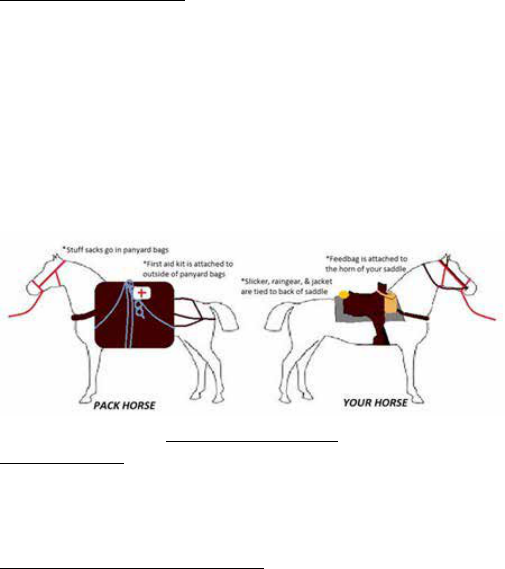
71
• Radios/MP3 Players/Video Game Devices
• Hammock
• Video Cameras
Useful Knots & Diagrams
It is recommended that all parcipants become familiar with the knots
listed below. Please use www.animatedknots.com as a resource.
• Sheet Bend: Used to aach a halter to a horse’s head
• Quick Release: Used to e a horse to a fence post or tree
• Square Knot: To secure saddle bags, jackets & feed bag to saddle
• Clove Hitch: Used in the set-up of a dining y
• Taut Line Hitch: Used in the set-up of a dining y
• Lark’s Head: Used to hang bear bags
• Daisy Chain: Used to consolidate the trail of rope securing the crew
gear to a pack horse
• Diamond Hitch: Used to secure crew gear to a pack horse
• Half Hitch: Used to secure crew gear to a pack horse
Day One at Philmont
Welcome Center
At last you’re here! Drive in beside the gateway to the unloading area
at the Welcome Center, where you will be greeted by a sta member
with complete instrucons for unloading and parking. Please follow them
carefully.
Meet Your Horseman and Wrangler
A Horseman and Wrangler will be assigned to your crew for the duraon
of your trek. They will spend the morning of your arrival day checking tack
and shoeing horses to prepare for your trek. They will then meet you at 1
pm at the Welcome Center, help with inial processing through Camping
Headquarters, and will guide you through the steps outlined in the Cavalcade
Guidebook to Adventure to ensure you’re ready for your circle ride the
following day.
The Horseman’s job is to lead your Cavalcade crew through your eight days
and to care for the horses. He or she will give instrucons on horsemanship
and do everything possible to assure a safe trip. Please pay close aenon to
instrucons and follow all suggesons for a safe experience.

72
Philmont Check-In
Before your crew hits the trail, the following tasks must be completed:
• Start hydrang now!
• Tent Assignment: You will receive tent assignments at the Welcome
Center for your rst night at Philmont. Your Horseman or Wrangler will
show your crew to their assigned tents.
• Crew Photo: A trained Philmont photographer will take your crew photo
before you depart for the trail. Most Crews elect to wear their full BSA
uniforms or their crew uniforms. Each crew will receive a special code
for a digital download of their photo. Addional photo merchandise is
available at www.philmontphotoarchive.org.
• Registraon: Your conngent leader or Lead Advisor will meet the
registrar in Camping Headquarters. Philmont requires that three
persons in each crew be currently cered in Wilderness First Aid
Basic and CPR. Current cercaons will need to be presented. A large
envelope will be provided to store extra money, credit cards and/or
valuable documents in the safe while your crew is on the trail. At this
me, you will pay any outstanding fees.
• Logiscs: Your Adult Advisor and Crew Leader will meet one of the
inerary planners at Logiscs Services to nalize arrangements for your
program, food pickups, bus transportaon, and conservaon sites.
Your Crew Leader should bring their Crew Leader Field Guide and an
unmarked Philmont overall map to mark your route and campsites.
You will be given a copy of your selected inerary as a souvenir of your
Philmont adventure.
• Medical Recheck: A medical recheck, which may include blood pressure
and weight check, will be given to all crew members. Your Horseman
will give you the procedures for this required recheck. You will need to
bring any medicaon with you to the recheck (in original container).
A parcipant whose weight exceeds the maximum allowable on the
height/weight chart will not be allowed to parcipate and should not
aend or they may be sent home at their own expense. To make the
medical recheck as smooth as possible, crew advisors should closely
check the Annual Health and Medical Record to ensure it is lled out
and all medical forms are uploaded to the Gateway before arrival.
Addional informaon on chronic health issues can be found on the
Philmont Website.
• Ouing Services: Ouing Services is located in the Mabee Services
Building. Trail equipment including tents, poles, cooking pots, etc.,
will be issued to your crew along with your rst issue of Trail Meals.
The Crew Leader’s copy of your inerary must be presented to draw
your trail food. Please make sure to double check your meals and gear
received. White gas purchase and pack rental is also handled through
Ouing Services.
The Philmont Mail Room is also located in the Mabee Services Building
near Ouing Services. Your Adult Advisor or Crew Leader should plan
73
to check for mail before leaving this area.
• Shakedown: In a place designated by your Horseman you will unpack
everything. Your Horseman will review the necessary items and
demonstrate the best methods of packing at Philmont. Store excess
items in your crew locker or vehicle.
PLEASE NOTE: Aer leaving Camping Headquarters, there is NO
opportunity to return excess baggage. If you have doubts about taking
certain items, discuss them with your Horseman. Your Horseman is
NOT permied to bring any crew gear you take on the trail back to Base
Camp nor can items be le in a backcountry camp to be delivered and
held in Base Camp. You are responsible to carry everything you take
with you for the duraon of your trek.
• Conservaon Project, Emergency and Trail of Courage Informaon
Boards: Your Horseman will describe these informaon boards in more
detail at their designated sites in Base Camp.
• Tour Camping Headquarters – As me permits, your Horseman can
give you a tour of Camping Headquarters. Visit the Naonal Scoung
Museum and while there schedule a tour of the Villa Philmonte.
• Tooth of Time Traders (TOTT)- Your tour should include a visit to the
Tooth of Time Traders where a complete supply of outdoor gear and
equipment, Philmont items (patches, belts, buckles, maps, gi cards,
etc.) and other souvenirs are available. The Tooth of Time Canna
is located adjacent to the TOTT. Items are available online at www.
ToothOfTimeTraders.com.
• Headquarters Dining Hall: In Camping Headquarters, you will eat in the
dining hall. The menus are well-balanced and nutrious.
• Advisor’s Meeng/Crew Leader’s Meeng/Chaplain Aide’s Meeng/
Wilderness Pledge “Guia” Meeng: Separate meengs will take place
for Lead Advisors (all adults should aend), Crew Leaders, Chaplain
Aides, and Wilderness Pledge “Guias”. Topics will include current
backcountry condions as well as ps to improve your Expedion.
• Religious Services: Chaplains of Jewish, Protestant, Catholic, and LDS
faiths conduct services at Camping Headquarters beginning at 7 p.m.
Your crew is encouraged to aend. The Tooth of Time Traders and will
be closed at this me.
• Contact home: Aer supper is a good me to write home. Your parents
will enjoy hearing from you. (Philmont postcards are available at the
Tooth of Time Traders, Mail Room, and in backcountry Trading Posts).
• Opening Program: Your rst evening program at Philmont is a portrayal
of the “Philmont Story”, a historic narrave of the Southwest. Your
Philmont adventure begins here. Warm clothing is recommended for
this and all evening programs.
• A Good Night’s Sleep: Following the campre, quietly return to your
tent for a good night’s sleep as it will help you adjust to the altude and
be ready for Tomorrow you hit the trail! Be sure your crew adheres to
the nightly quiet hours. Your acons can negavely impact others.

74
• Security, Lost-and-Found, Crew Lockers: Philmont employs a Seasonal
Security Sta to assist with Lost and Found, issue crew lockers, and
provide security. Crew lockers are reserved for crews traveling by public
transportaon.
• Laundry: Dirty clothing may be laundered at Philmont’s self-service
Laundromat. One or more crew members should be assigned to bring
all the crew’s dirty clothes to the laundry. All clothing should be marked
with your name in indelible ink and any loose patches or insignia should
be removed to save me and confusion. Laundry soap and supplies are
available from the Tooth of Time Traders or the Laundromat.
Crews with vehicles will store belongings in their vehicles. The number of
lockers is limited (max 2 lockers per crew). When you hit the trail, nothing
can be le in your tent. Do not leave valuables in tents while in Base Camp –
Philmont is not responsible for lost or stolen items.
Day Two at Philmont
Southern Ineraries
Aer breakfast, follow your Horseman’s instrucons and report to Cale
Headquarters for horsemanship and saddle training. You will be matched with
a horse that will be yours for the Cavalcade. You will then go on a circle ride
that will start and end at Cale Headquarters and complete campsite training
before going back to your tents at camping headquarters for the night.
Northern Ineraries
Aer breakfast, check out of tent city and report to the Welcome Center
for your bus ride to Ponil for horsemanship and saddle training. You will be
matched with a horse that will be yours for the remainder of the Cavalcade.
Aer training, you will go on a circle ride that will start and end at Ponil. You
will spend this night at Ponil and receive camping training at this me.
Day Three at Philmont
Those on Southern ineraries will check out of tent city aer breakfast
and report to Cale Headquarters with your gear where your pack horses
will be waing. Aer packing all personal and crew gear and saddling
up, your Horseman will lead your crew to your rst backcountry camp.
Those on Northern ineraries will report to the Ponil Corral where your
Horseman/ Wrangler will assist with packing all gear and lead you to your rst
backcountry camp.
Gymkhana
On your last day, aer arriving back at base camp or Ponil for South or
North ineraries respecvely, your crew will compete (weather perming) in
a series of light-hearted riding games against the other cavalcade crew that
began their trek at the same me. This event is called Gymkhana (jim-CON-
uh) and is meant to be the culminaon of your trek and a demonstraon of
the horsemanship skills you have honed during your week in the saddle.
THE PHILMONT GYMKHANA PATCH A patch awarded by Philmont to each
parcipant aer the Gymkhana compeon on the last aernoon of the trek.
75
NOTES
__________________________________________________
__________________________________________________
__________________________________________________
__________________________________________________
__________________________________________________
__________________________________________________
__________________________________________________
__________________________________________________
__________________________________________________
__________________________________________________
__________________________________________________
__________________________________________________
__________________________________________________
__________________________________________________
__________________________________________________
__________________________________________________
__________________________________________________
__________________________________________________
76
NOTES
__________________________________________________
__________________________________________________
__________________________________________________
__________________________________________________
__________________________________________________
__________________________________________________
__________________________________________________
__________________________________________________
__________________________________________________
__________________________________________________
__________________________________________________
__________________________________________________
__________________________________________________
__________________________________________________
__________________________________________________
__________________________________________________
__________________________________________________
__________________________________________________

77
INDEX
A
Accidents · 40
Advisor’s Meeng · 29
Arriving · 26
Autumn Adventure · 64
Awards · 7
B
Backpacking Stoves · 16
Bearmuda Triangle · 34
Boots · 19, 21
C
Cavalcades · 67
Check-In · 27
Clothing · 17
Cooking · 32-33
Crew Photo · 27
D
Day One · 27
Day Three · 30
Day Two · 30
Dehydraon · 37, 47
Dining Hall · 29
Dishwashing · 41
Drinking Water · 41
Drones · 43
E
Emergency
Locator Devices · 16
Medicaon · 8, 22, 28
Telephone · 10
Transportaon · 48
Equipment
Crew · 23
Personal · 20
Philmont Issued · 25
Essenals for Hiking · 25-26
Expedion Number · 10, 33
F
Family Adventure Camp 66
Firearms · 42
Fires · 32, 36, 42
Fireworks · 42
First Aid Kit · 24, 26, 47
Fishing Licenses · 18
Flash Floods · 45
Food · 33
Fuel 16-18, 24, 56-58
G
GPS · 15, 55
Group Dynamics · 40
H
Harassment · 5
Health & Safety
Altude Sickness/AMS · 39, 47
Dehydraon · 37, 47
Heat Exhauson · 38
Heat Stroke · 38
Hypervenlaon · 38
Hypothermia · 38
Medical Recheck · 28
Stress · 40
Sunburn · 39
Wildlife-Borne Diseases 39
Height/Weight Chart · 9
History · 4
Homebound · 62
Horse Rides · 52
I
Insects · 46
Insurance Coverage · 48
Inerary · 10
L
Latrines · 41
Laundry · 29
Lightning · 44
Leave No Trace 4, 7, 30, 36, 52
Locaon · 4
Lockers · 29
Logiscs · 28
Lost & Found · 29
M
Mail · 10
Map & Compass · 15, 24, 25, 30
Medical Record · 6, 8
78
Money · 18, 23
Museums · 59
O
OA Trail Crew · 63
Opening Program · 29
Organizing Your Crew · 12
Ouing Services · 28
P
Packs · 14
Patrol Method · 10
Philmont Training Center 66
Photo Release · 5
Physical Training · 9
Program · 5, 48, 56, 64
R
Ranch Hands · 64
Ranger · 27, 30
Ralesnakes · 46
Rayado · 62
Registraon · 27
Religious Services · 60
ROCS · 63
S
Security · 29
Shakedown · 28
Sleeping Bags · 19
Smart Phones · 43
Socks · 19, 21, 37
Sta · 5, 65
STEM Trek · 64
Sumps · 41
T
Tent Assignment · 27, 62
Tents · 14, 34, 35
Tobacco · 42
Trading Posts 16, 23, 31, 47, 56, 58
Trail Crew Trek · 63
Training Center · 66
Turkey Bags · 23, 33
W
Weather · 17
Welcome Center · 27, 61
Wildlife · 4
Winter Adventure · 65
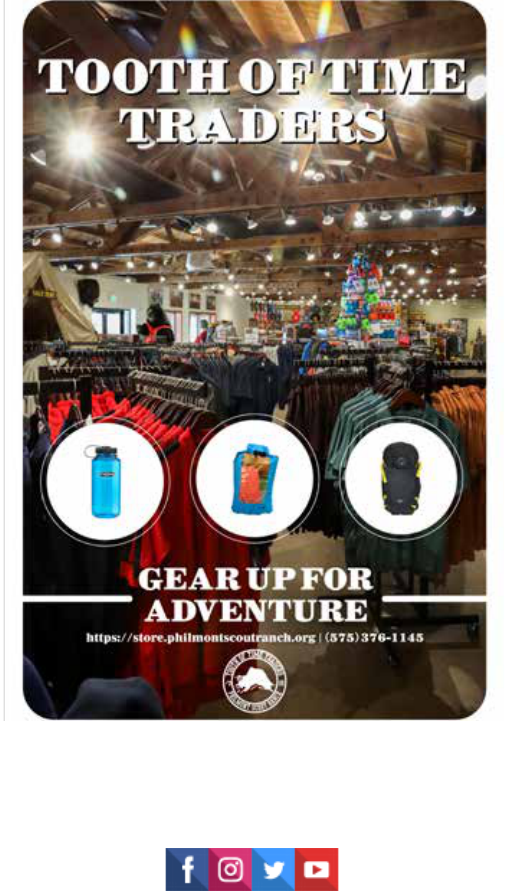
79
VISIT PHILMONT ONLINE:
PhilmontScoutRanch.org
facebook.com/PhilmontScoutRanch
instagram.com/PhilmontScoutRanch
youtube.com/PhilmontScoutRanch
twitter.com/Philmont

80
PHILMONT GRACE
For Food
For Raiment
For Life
For Opportunity
For Friendship and Fellowship
We ank ee O Lord
PHILMONT HYMN
Silver on the sage,
Starlit skies above,
Aspen covered hills,
Country that I love.
Philmont here’s to thee,
Scouting Paradise,
Out in God’s Country,
Tonight.
Wind in whispering pines,
Eagles soaring high,
Purple mountains rise,
Against an azure sky.
Philmont here’s to thee,
Scouting Paradise,
Out in God’s Country,
Tonight.
Cover Photos from Philmont MPS Sta
Front Cover by Ryan Ash & Inside Cover by Jack Rodgers
Back Cover by Christopher Langlois
